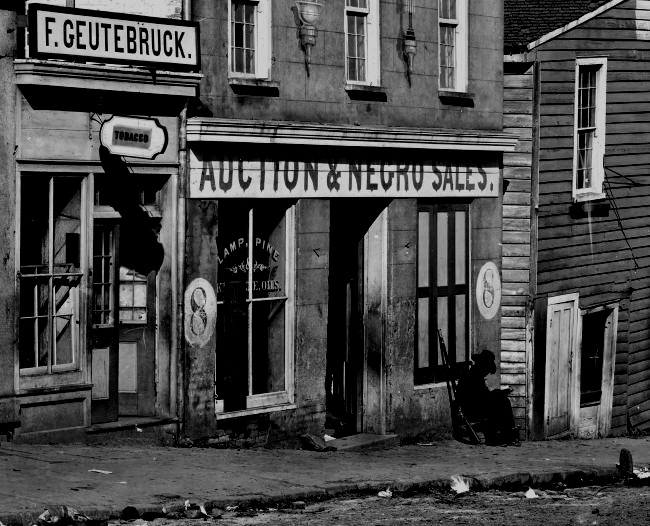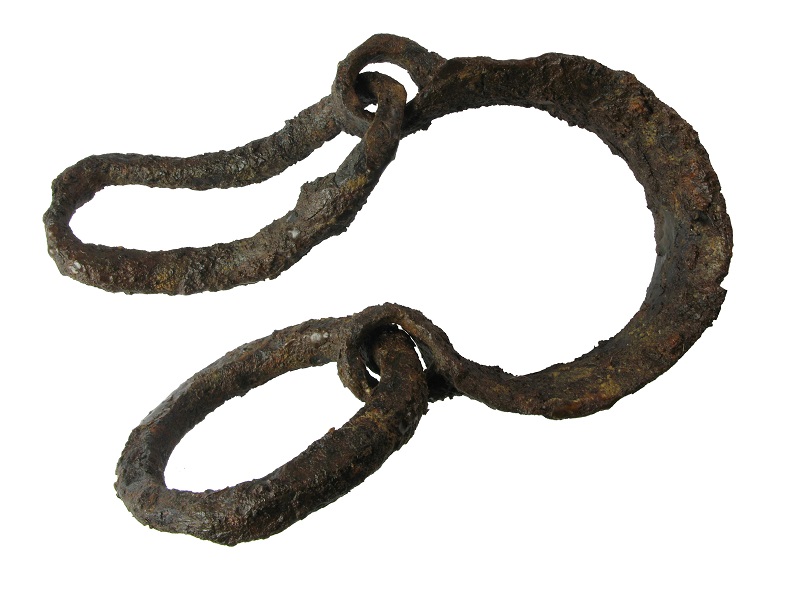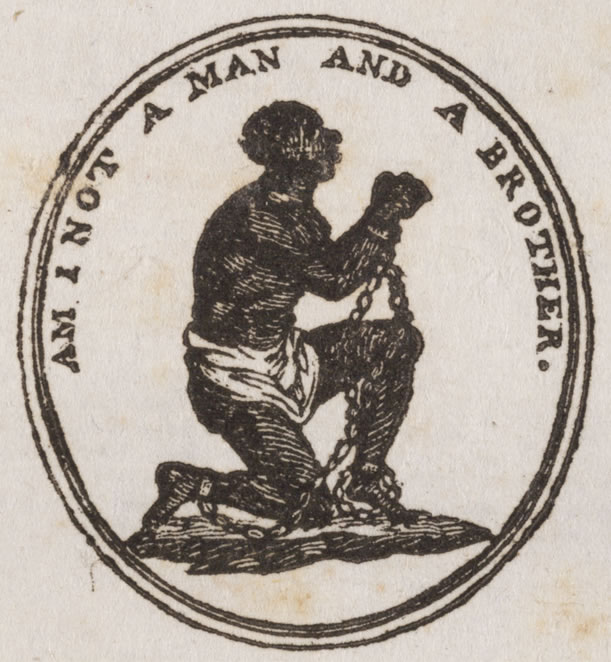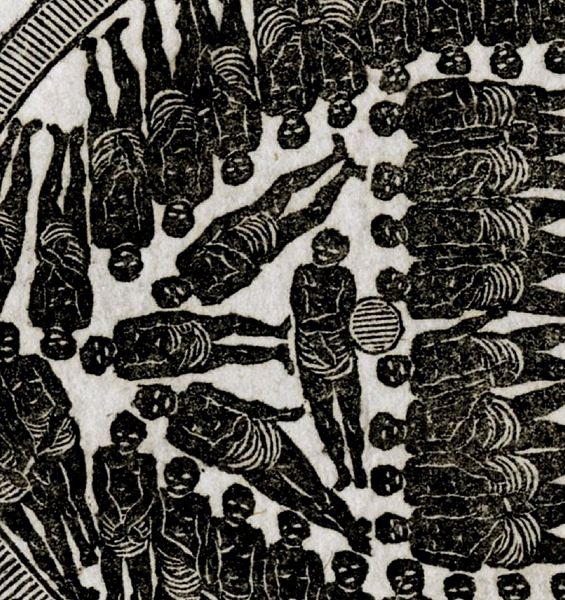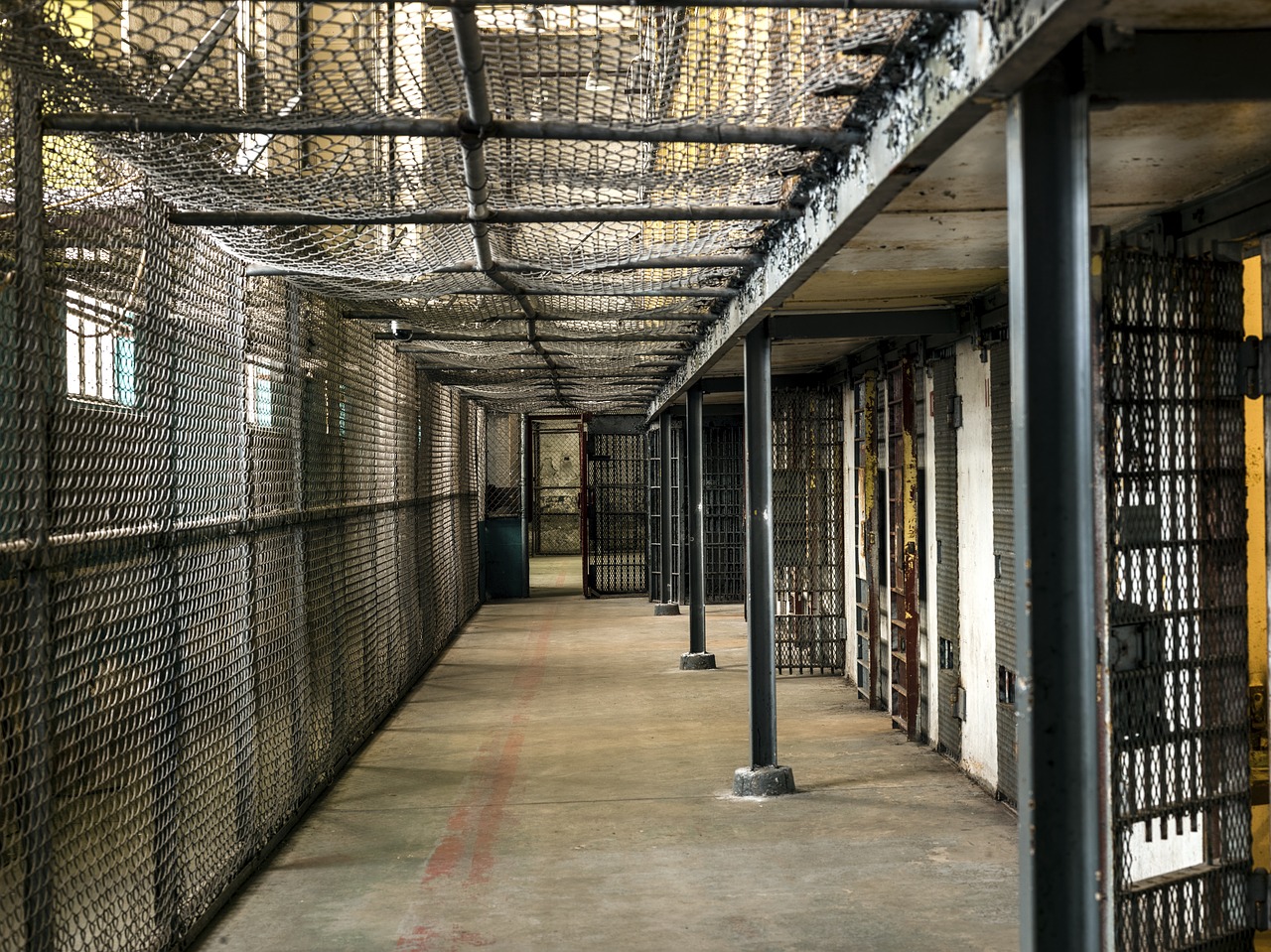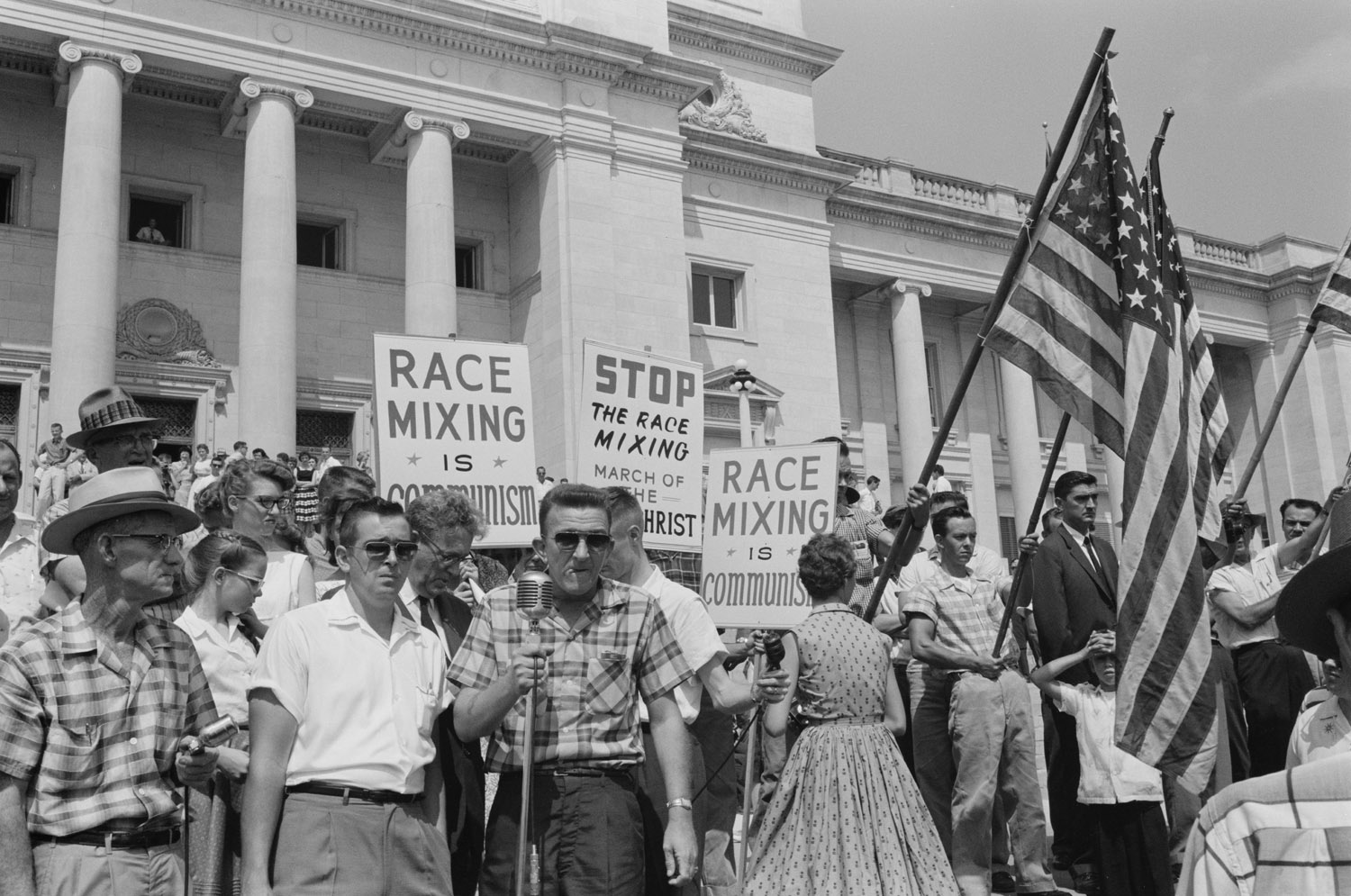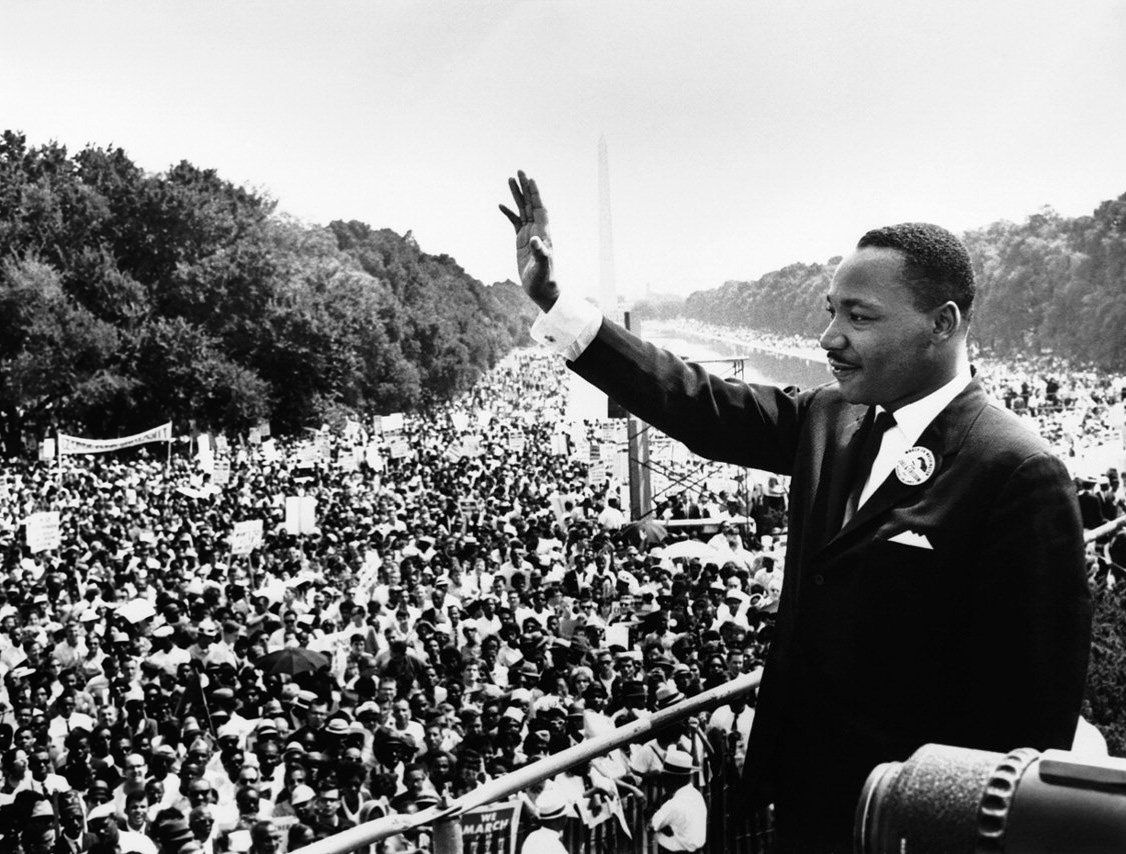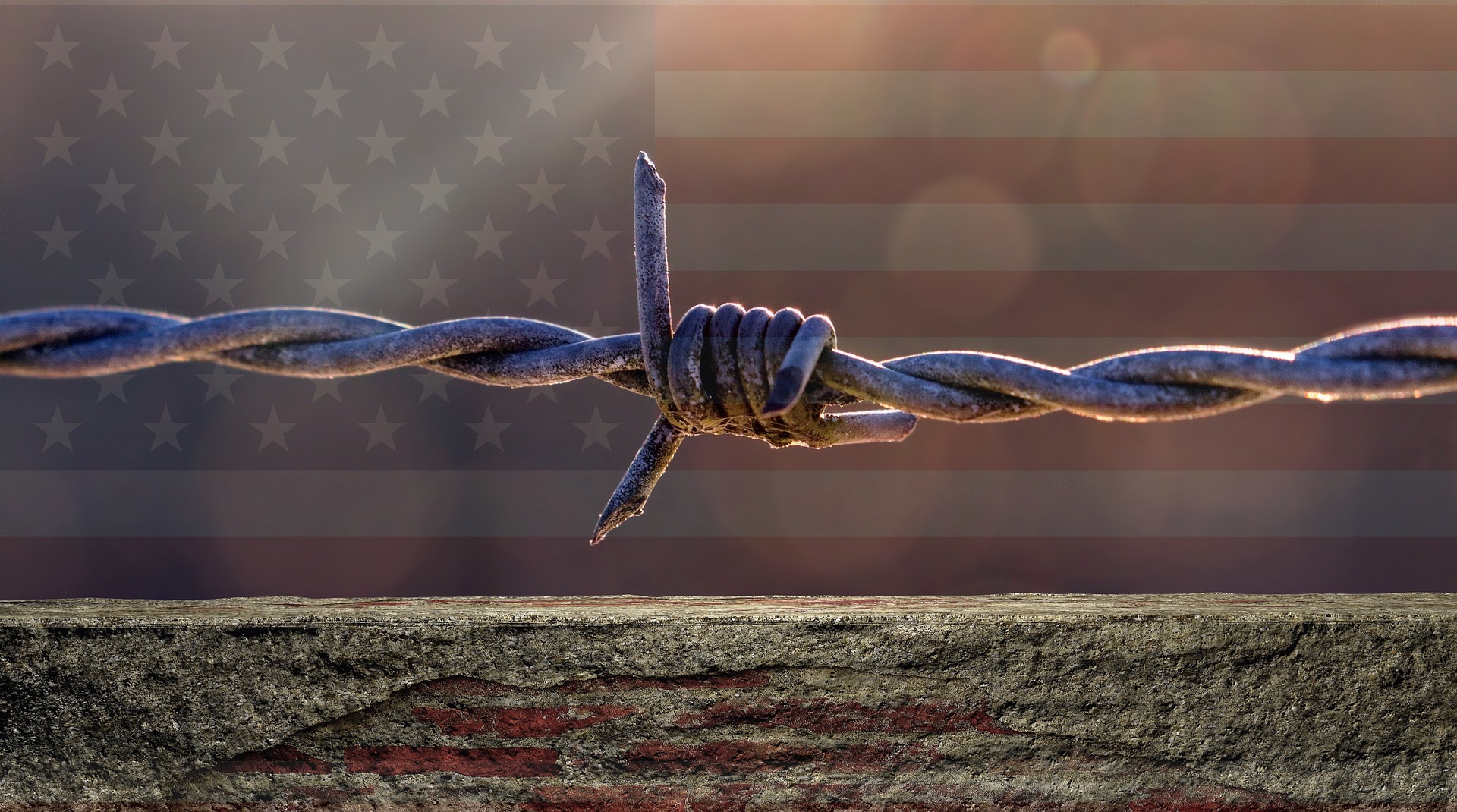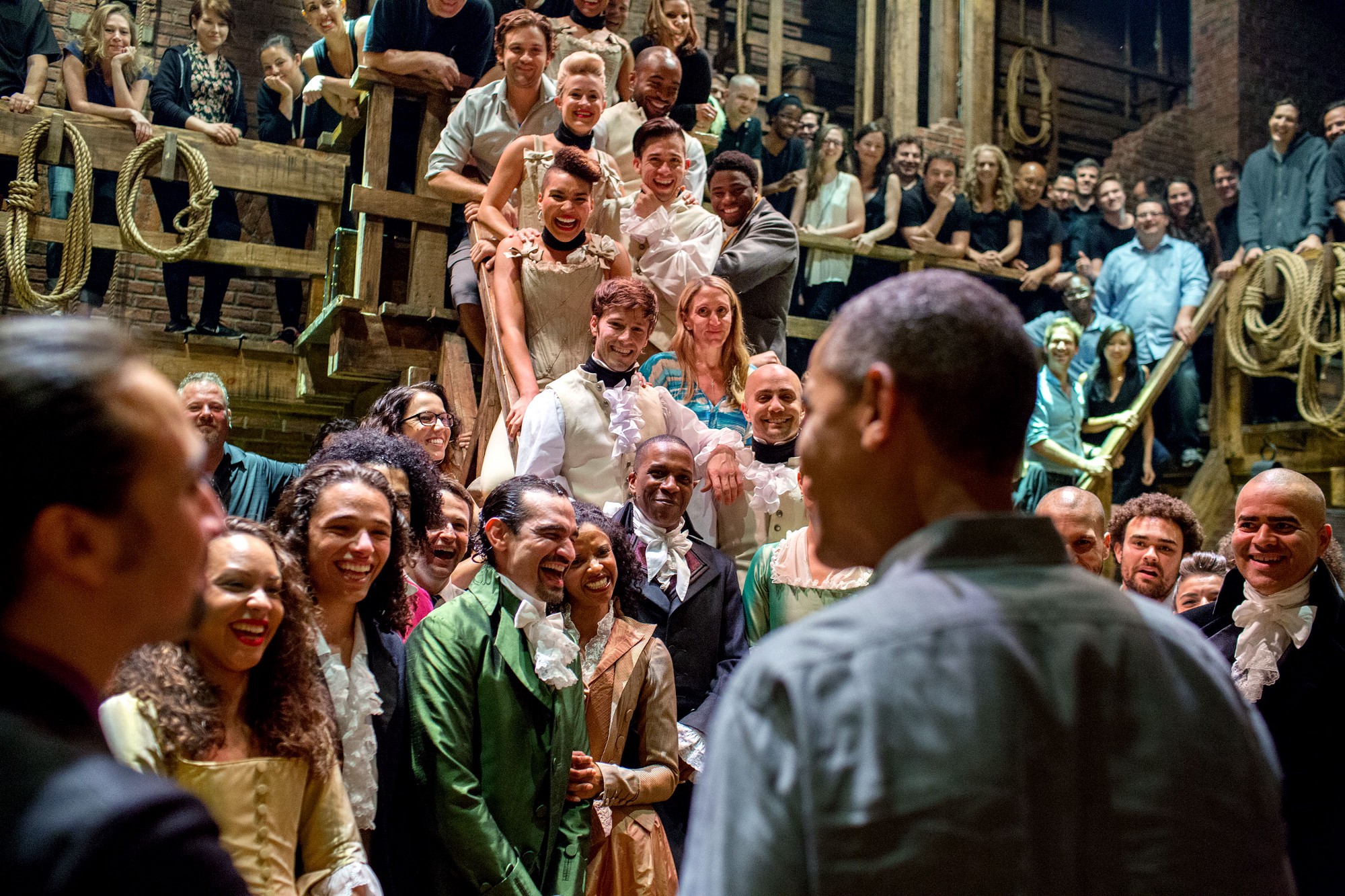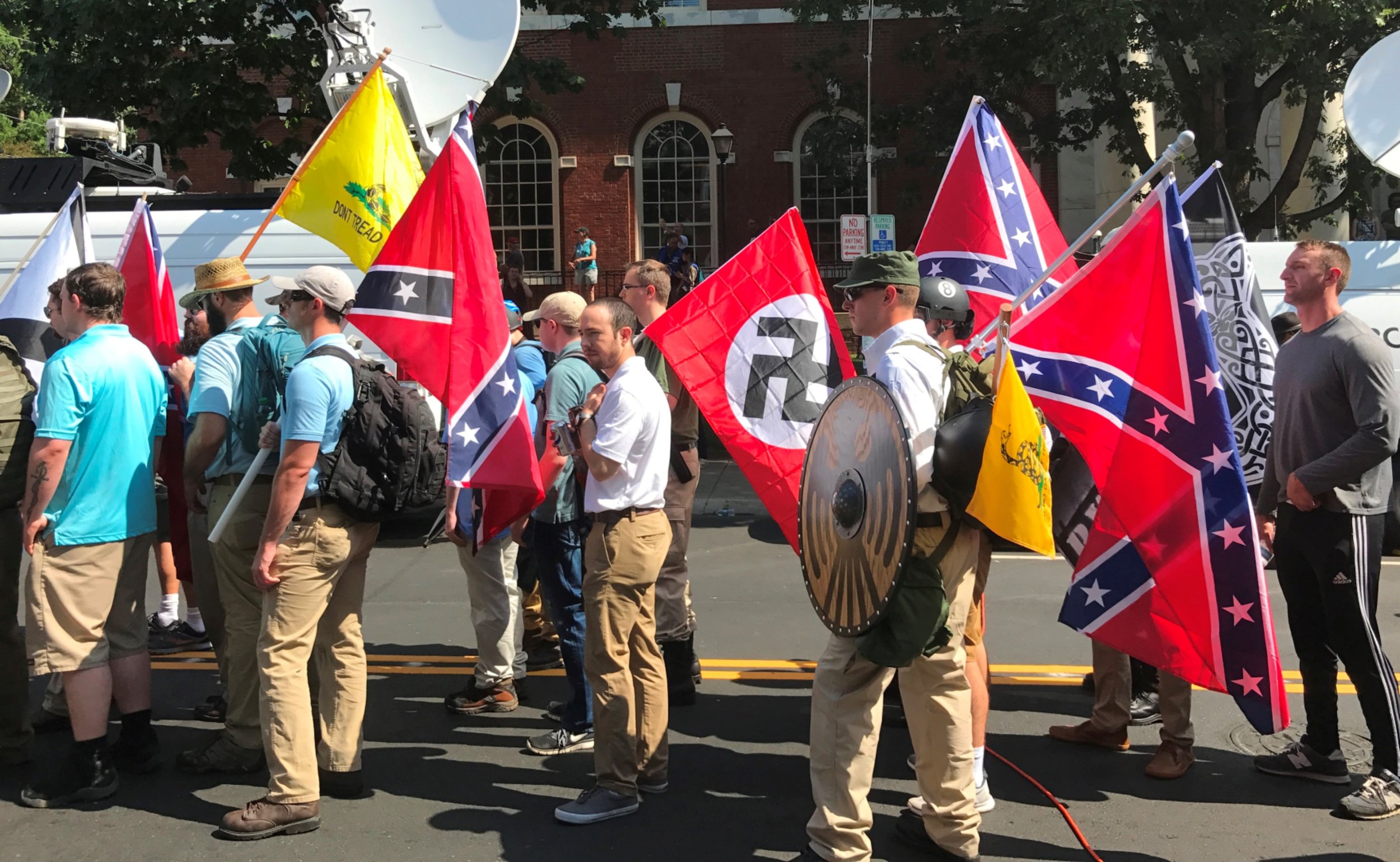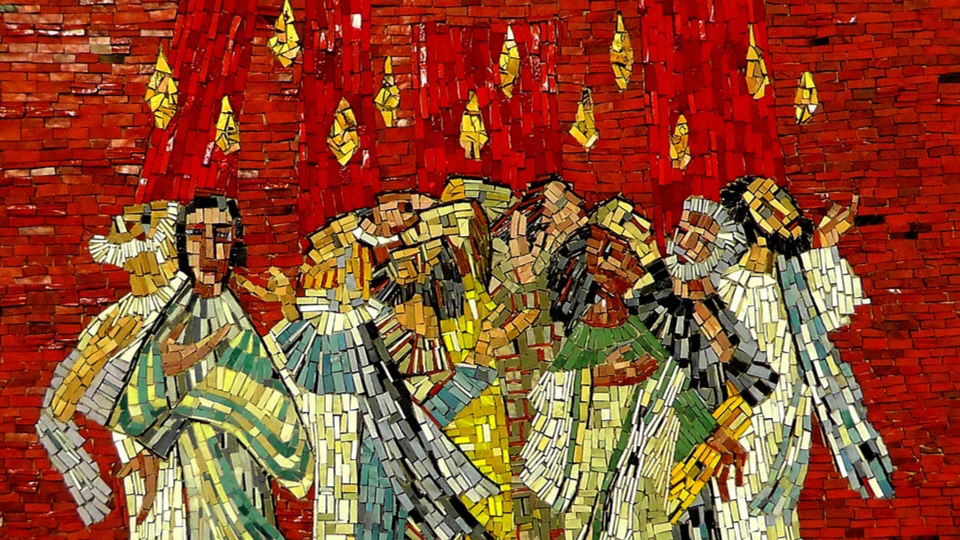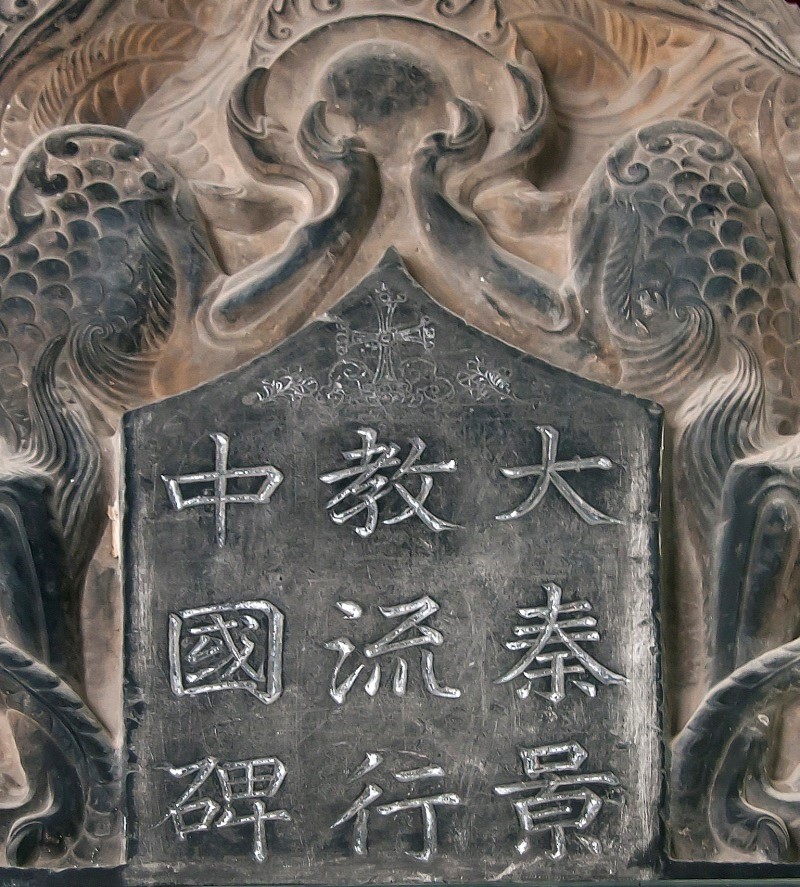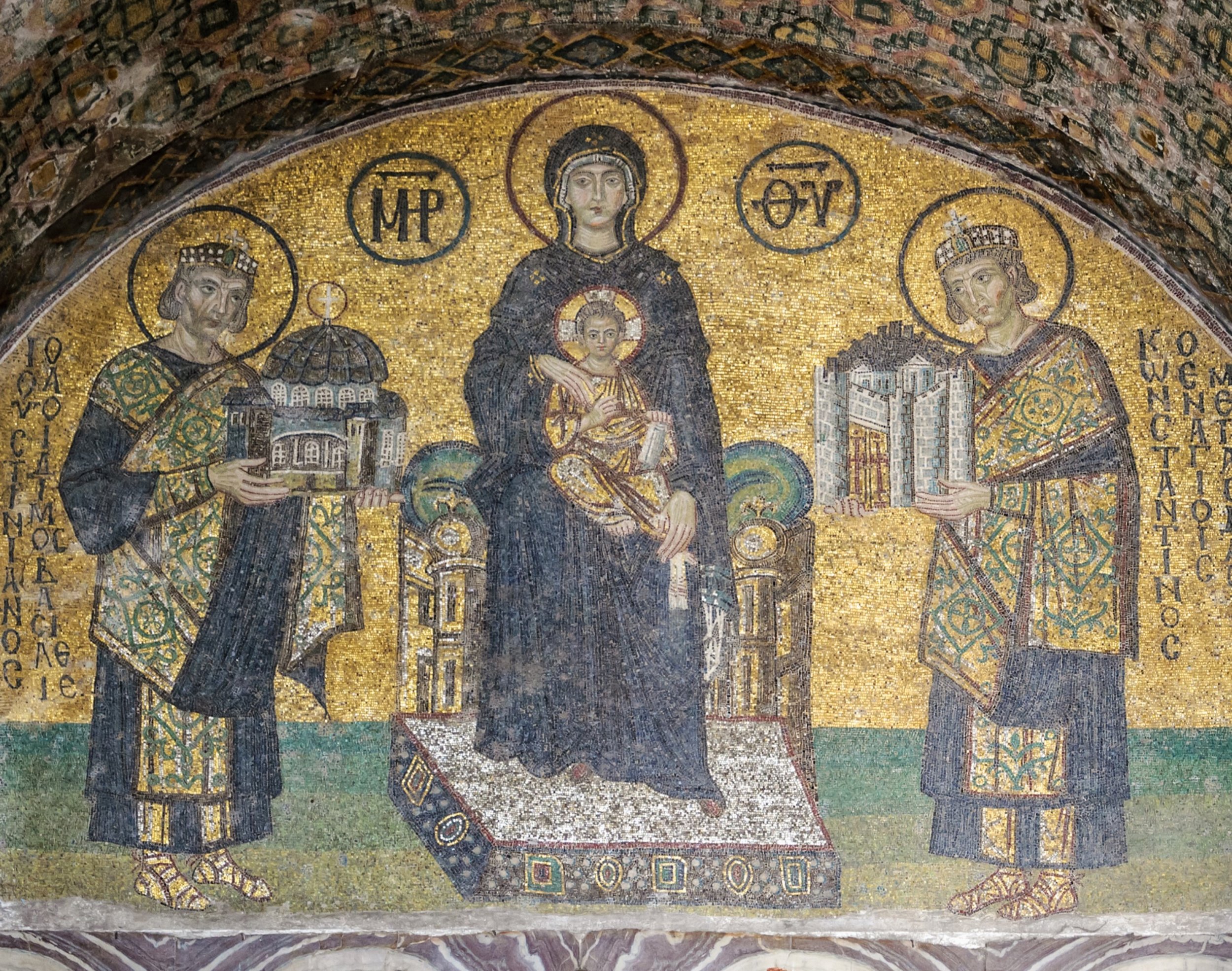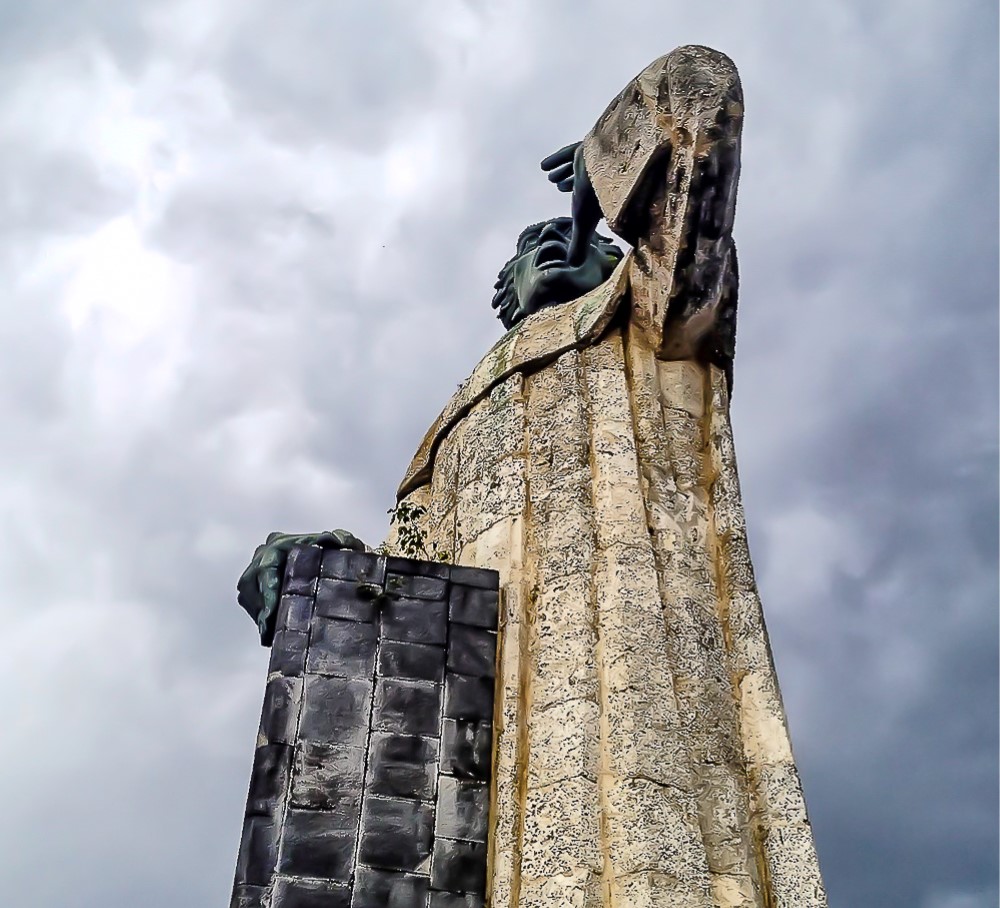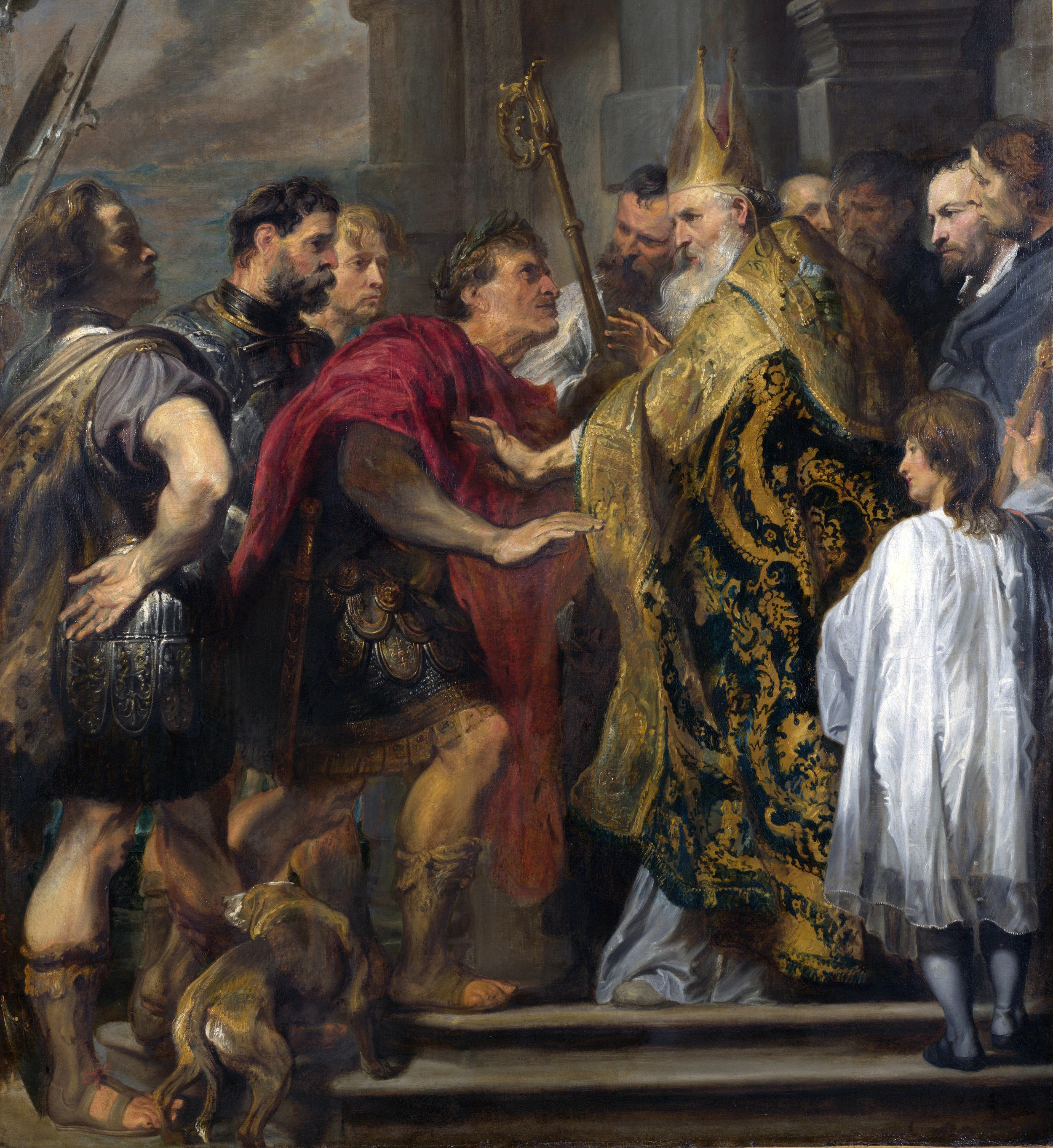Transatlantic Slavery in the U.S.
Photograph: A slave market in Atlanta, Georgia in 1864. Photo credit: George N. Barnard (1819 - 1902), Public Domain.
Introduction
The following resources look at the Transatlantic Slave Trade in U.S. history: motivations; severity; extent; etc.
Conversation Stations
These are the images used in artistic physical displays. They are survey questions and conversation starters that are topically and thematically organized. They demonstrate how Jesus is relevant to each topic or theme. You can also just view the images on your device. If you would like, see all our Conversation Stations; below are the ones that relate to the topic of Race.
Whose Justice? (and instructions and Christian Restorative Justice Study Guide)
Whose Justice? for Harvard Law School
Is a Good Friend Hard to Find? (and instructions and conversation tree)
What Can We Do About Evil? (and instructions and conversation tree) and smaller version and brochure version
Que Podemos Hacer Sobre La Maldad? for the Asociacion Dominicana de Estudiantes Evangelico, 2014
Does the Good Outweigh the Bad? (and instructions)
Race What's the Problem? (and instructions) and brochure version
Messages and Resources on Transatlantic Slavery in the United States
Slavery in the New England Colonies: Key Moments and Motivations. An outline (8 pages) of early events in the English Puritan colonization of New England. The outline draws on historical research to show how the Pequot War of 1637 - 38 was motivated, in large part, by financial reasons: The Puritans of Mass Bay Colony needed cheap labor, as the seven year contracts of English indentured servants were expiring, and the seven year monopoly on trade with Old England was expiring as well. New England then participated in the Triangular Trade, transporting enslaved Pequots and bringing back enslaved Africans. This outline focuses on stated motivations by the English settlers and slave traders involved. They drew on biblical language and categories but utterly betrayed Christian faith.
Resources on Transatlantic Slavery in the United States
Top Resources
Margaret Ellen Newell, Brethren by Nature: New England Indians, Colonists, and the Origins of American Slavery. Cornell University Press | Amazon page, May 2015. See lecture, Margaret Ellen Newell, Origin Stories: The Pequot War and Indigenous Enslavement in New England. Partnership of Historic Bostons, Nov 6, 2023. Historian Margaret Newell details the background to what was chronologically the first instance of statutory laws in the original colonies dealing with slavery: Massachusetts passed a 1641 slave law referring to Pequots captured in the Pequot War. She estimates that 318 - 320 Pequots, mostly women and children, were taken by the Massachusetts Bay colony, which increased their labor force by one-third. The probable cause for this was the expiration of contracts of indentured servitude of English and others. Newell tells the story of Cesar and Betty: Cesar was a Pequot who sued for his freedom and won by jury, on the grounds that his mother Betty had been held as a war captive illegally. After the Pequot War, the Pequots were then told they did not legally exist, which was only reversed in 1975.
Jared Ross Hardesty, Black Lives, Native Lands, White Worlds: A History of Slavery in New England. Bright Leaf | Amazon page, Jan 2020. See lecture, Jared Ross Hardesty, Built from Bondage: Slavery and the Colonization of New England, 1620-1700. Partnership of Historic Bostons, Oct 19, 2023. Hardesty, renowned expert in Massachusetts slavery and unfreedom, opened PHB's 2023 six-part series, Enslavement & Resistance: New England 1620-1760, with a trenchant exploration of the importance of slavery in the colonization of New England. Although slavery existed everywhere in early America, colonists in New England created a flexible and resilient slave labor system that mixed a variety of other dependent laboring arrangements - indentured servitude, apprenticeship, poor laws, and convict servitude - to address labor shortages. In turn, these enslaved people became ingrained in the colony’s social fabric, giving them access to public goods and a place in society beyond their role as laborers. This presentation offers an overview of the origins and significance of slavery in early New England. Often overlooked in histories of American and Atlantic slavery, New England was nevertheless an important space for the creation, perpetuation, and refinement of slavery as an institution.
REV, Middle Passage to Wallace: the Whitney Plantation Museum Experience. REV-Bayou Region, Feb 1, 2022. A 30 minute video focused on the Whitney Plantation in New Orleans, Louisiana.
Danielle Bainbridge, Origin of Race in the United States. PBS Origins, Apr 3, 2018. A 10 minute video on how, in the colonies and the US, race was a way to divide the labor force and grow plantation crops.
Mark Brumley, Let My People Go: The Catholic Church and Slavery. Catholic Education Resource Center, Jul-Aug 1999. See also ibookworm, Pope Pius IX and the Southern Confederacy in the Civil War. Reddit, 2016. See also The Armchair Historian, American Civil War from The European Perspective | Animated History. Armchair Historian, Aug 14, 2020. Points out that Pope Piux IX did not acknowledge the legitimacy of the Confederacy, and told the ambassador to the Vatican that the Confederacy should set out on a path of gradual abolition; also says that Europe was persuaded to support the Union because Abraham Lincoln claimed higher moral ground through the Emancipation Proclamation, as Europe was against slavery.
Sarah Ruble, Race and Christianity, Session One. Sarah Ruble. An excellent overview of colonial Virginia in the 1600 - 1700s where “white persons” appeared in colonial law and race took precedence over faith to determine eligibility for freedom.
Heimler’s History, Why Southerners Thought Slavery Was a Good Idea. Heimler’s History, Jan 6, 2018. Arguments: social stability; civilizational; economic; racial; biblical. A distillation of historian David W. Blight. For quotations from Southern spokespeople like John C. Calhoun and George Fitzhugh, see Lumen Learning, Module 11: Cotton Is King — The Antebellum South (1800-1860): Southern Pro-Slavery Arguments. Lumen Learning.
Calvin Schermerhorn, The Business of Slavery and the Rise of American Capitalism, 1815–1860. Yale University Press | Amazon page, Apr 28, 2015. See also Zoe Thomas, The Hidden Links Between Slavery and Wall Street. BBC, Aug 29, 2019. Thomas writes:
“By some estimates, New York received 40% of US cotton revenue through money its financial firms, shipping businesses and insurance companies earned. But scholars differ on just how direct a line can be drawn between slavery and modern economic practices in the US. "People in non-slave areas - Britain and free US states - routinely did business with slave owners and slave commerce," says Gavin Wright, professor emeritus of economic history at Stanford University. But he says the "uniqueness" of slavery's economic contribution has been "exaggerated" by some.”
Marina Manoukian, Banks You Didn’t Know Had Ties to Slavery. Grunge, Nov 15, 2021. Previously small banks are now part of larger banks. They include Bank of America, HSBC, Lloyd’s Banking Group, Caisse Des Depots, Barclays, J.P. Morgan Chase, Citibank, Royal Bank of Scotland, Arbuthnot Latham, Truist Financial, Wells Fargo. Sharon Ann Murphy, Banking on Slavery: Financing Southern Expansion in the Antebellum United States. University of Chicago Press, 2023.
Resources by Date of Publication
Letter from Virginia Slaves to Bishop Edmund Gibson. August 4 and September 8, 1723, Encyclopedia Virginia. Enslaved people asked Gibson to set them free on account of their being Christian.
Encyclopedia.com, Black Slave Owners (website)
The Cynical Historian, 10 Common Slavery Myths. The Cynical Historian, May 4, 2017. In the Americas, especially the U.S., rebutting Lost Cause revisionism and other white supremacist views.
Wikipedia, Anthony Johnson (colonist) (Wikipedia article) one of the first black slaveholders in colonial America
Black Beat, 21 Horrific Stories of Slavery They Never Reported in the Mainstream Media. Black Beat.
Frederick Douglass, What to the Slave is the Fourth of July? Teaching American History, Jul 5, 1852.
Georgia State Legislature, Confederate States of America - Georgia Secession. Avalon Project, originally approved Jan 29, 1861.
Alexander H. Stephens, Cornerstone Speech. American Battlefield Trust, March 21, 1861. Given at Savannah, Georgia, March 21, 1861. “Confederate Vice President Alexander H. Stephens presents what he believes are the reasons for what he termed was a "revolution." This revolution resulted in the American Civil War. Stephens's speech is remembered by many for its defense of slavery, its outlining of the perceived differences between the North and the South, and the racial rhetoric used to show the inferiority of African Americans. A few weeks after the speech, on April 12, 1861, Confederate forces fired on Fort Sumter in Charleston Harbor, initiating the American Civil War.” See also Jemar Tisby, It Was Always About Slavery. Footnotes by Jemar Tisby | Substack, Oct 18, 2023. “Alexander Stephens' famous "Cornerstone Speech" tells us what the Civil War and the Confederacy were truly about.”
Mississippi State Legislature, Confederate States of America - Mississippi Secession. Avalon Project, originally approved 1861.
“Our position is thoroughly identified with the institution of slavery-- the greatest material interest of the world. Its labor supplies the product which constitutes by far the largest and most important portions of commerce of the earth.”
South Carolina State Legislature, Confederate States of America - South Carolina Secession. Avalon Project, 1862.
“We affirm that these ends for which this Government was instituted have been defeated, and the Government itself has been made destructive of them by the action of the non-slaveholding States. Those States have assume the right of deciding upon the propriety of our domestic institutions; and have denied the rights of property established in fifteen of the States and recognized by the Constitution; they have denounced as sinful the institution of slavery; they have permitted open establishment among them of societies, whose avowed object is to disturb the peace and to eloign the property of the citizens of other States. They have encouraged and assisted thousands of our slaves to leave their homes; and those who remain, have been incited by emissaries, books and pictures to servile insurrection.”
Texas State Legislature, Confederate States of America - Texas Secession. Avalon Project, Feb 2, 1861.
“That in this free government all white men are and of right ought to be entitled to equal civil and political rights; that the servitude of the African race, as existing in these States, is mutually beneficial to both bond and free, and is abundantly authorized and justified by the experience of mankind, and the revealed will of the Almighty Creator, as recognized by all Christian nations; while the destruction of the existing relations between the two races, as advocated by our sectional enemies, would bring inevitable calamities upon both and desolation upon the fifteen slave-holding states.”
Constitution of the Confederate States of America. Avalon Project, originally approved March 11, 1861.
National Park Service, Abolition and the Statue of Liberty. National Park Service, 1886. “In 1886, The Statue of Liberty was a symbol of democratic government and Enlightenment ideals as well as a celebration of the Union's victory in the American Civil War and the abolition of slavery.” See also Gillian Brockell, The Statue of Liberty Was Created to Celebrate Freed Slaves, Not Immigrants, Its New Museum Recounts. Washington Post, May 23, 2019. “An early model, circa 1870, shows Lady Liberty with her right arm in the position we are familiar with, raised and illuminating the world with a torch. But in her left hand she holds broken shackles, an homage to the end of slavery…” The design changed for fundraising reasons.
A. Leon Higginbotham, In the Matter of Color: Race and the American Legal Process: The Colonial Period. Oxford University Press | Amazon page, 1980.
Robert A. Williams, The American Indian in Western Legal Thought: The Discourses of Conquest. Oxford University Press | Amazon page, 1992.
Africans in America, PBS/WGBH material in four chronological parts. PBS, 1998.
Mark Brumley, Let My People Go: The Catholic Church and Slavery. Catholic Education Resource Center, Jul-Aug 1999. See also ibookworm, Pope Pius IX and the Southern Confederacy in the Civil War. Reddit, 2016. See also The Armchair Historian, American Civil War from The European Perspective | Animated History. Armchair Historian, Aug 14, 2020. Points out that Pope Piux IX did not acknowledge the legitimacy of the Confederacy, and told the ambassador to the Vatican that the Confederacy should set out on a path of gradual abolition; also says that Europe was persuaded to support the Union because Abraham Lincoln claimed higher moral ground through the Emancipation Proclamation, as Europe was against slavery.
Eric Foner, Rebel Yell. blog, Jan 27, 2000. About the origins of the Confederate flag.
Sally E. Hadden, The Slave Patrols: Law and Violence in Virginia and the Carolinas. Harvard University Press | Amazon page, 2001. identifies slave patrols as at least significantly overlapping with State militias, thus influencing the Second Amendment and American gun culture.
Robert E. May, The Southern Dream of a Caribbean Empire, 1854-1861. University Press of Florida | Amazon page, updated version 2002. On Southern slaveholding expansionism. May explores the desire among Southerners to create a pro-slavery empire in the Caribbean and Latin America. See also Robert E. May, Manifest Destiny's Underworld: Filibustering in Antebellum America. University of North Carolina Press, 2002. where he examines the culture of filibustering and expansionist schemes in the South. See also Robert E. May, Slavery, Race, and Conquest in the Tropics: Lincoln, Douglas, and the Future of Latin America. Cambridge University Press | Amazon page, 2013. Scott Martelle, William Walker's Wars: How One Man's Private American Army Tried to Conquer Mexico, Nicaragua, and Honduras. Chicago Review Press | Amazon page, 2018.
Gavin Wright, Slavery and American Agricultural History. paper, 2003.
Edmund S. Morgan, American Slavery, American Freedom. W.W. Norton & Company | Amazon page, Oct 17, 2003.
Anne Farrow, Joel Lang, and Jenifer Frank, Complicity: How the North Promoted, Prolonged, and Profited from Slavery. Ballantine Books | Amazon page, Sep 27, 2005.
Marie Jenkins Schwartz, Birthing a Slave: Motherhood and Medicine in the Antebellum South. Harvard University Press | Amazon page, 2006. See excerpt from William Spivey, The Truth About American Slave Breeding Farms. Medium, Dec 30, 2022. Schwarts writes,
“Jefferson’s home state Virginia was the leading producer of slaves. Slavery eventually exceeded tobacco as their leading export. Maryland was second in slave production, followed by several other states. Economist Richard Sutch did a study which found that in 1860, on farms that had at least one female slave the ratio of women to men was 2:1. In Virginia, female slaves exceeded males by over 300,000. They were used to breed. Robert Lumpkin ran what is mostly referred to as a “slave jail” with little recognition that he ran the nations largest breeding farm. He personally had five children with a slave Mary who he ultimately remembered in his will… Many films have depicted boats arriving in New Orleans which became the largest slave market in the Antebellum South. Rarely is it shown those ships originated in Richmond and Baltimore. Slaves were also shipped by railroad packed in boxcars or sent by stagecoach. The slave breeding farms are mostly left out of the history books except those that deny their existence. Many of the white slave owners felt they were doing their female slaves a favor when they mated with them. Granting them a respite from the brutish black slaves they would otherwise be subjected to. Generally speaking, it was the house slaves that got raped the most... We’re generally aware of that situation which we’ve been led to believe was the worst case scenario. Nobody talks about the 13-year-old girl on a breeding farm, forced to bear as many children as possible, only to have them ripped away and send down South to endure a lifetime of hardship, without a mother.”
See also Marie Jenkins Schwartz, “Good Breeders”. Slate, Aug 24, 2015. See also William Spivey, The Typical Model of an American Slave Breeding Farm. Medium, Jan 22, 2023.
"I consider a woman who brings a child every two years as more profitable than the best man of the farm. What she produces is an addition to the capital, while his labors disappear in mere consumption." -Thomas Jefferson.
Mark A. Noll, The Civil War as a Theological Crisis. The University of North Carolina Press | Amazon page, 2006. A very readable and concise study of why American evangelicalism must be considered a heretical aberration from English-speaking Christians outside the US, and also American Catholics, who retained a rich memory of the church's abolitionist posture from its earliest times.
Katy June-Friesen, An Ancestry of African-Native Americans. Smithsonian Magazine, Feb 17, 2010. “Using government documents, author Angela Walton-Raji traced her ancestors to the slaves owned by American Indians.”
“Walton-Raji’s ancestors are Freedmen, African-Americans who were slaves of the Five Civilized Tribes – the Cherokee, Chickasaw, Choctaw, Creek and Seminole Nations – in Indian Territory, which became Oklahoma in 1907. The Cherokee freed their slaves in 1863, and after the Civil War, the other tribes did the same. All but the Chickasaw eventually granted Freedmen full citizenship in their tribe.”
Although, NPR Staff, America's 2nd Largest Indian Tribe Expels Blacks. NPR, Sep 20, 2011. See also Alex Kellogg, Cherokee Nation Faces Scrutiny For Expelling Blacks. NPR, Sep 19, 2011. See also Wikipedia, Black Indians in the United States (Wikipedia article)
Thavolia Glymph, Out of the House of Bondage: The Transformation of the Plantation Household. Cambridge University Press | Amazon page, Jun 30, 2008. and pdf
Moon-Ho Jung, Coolies and Cane: Race, Labor, and Sugar in the Age of Emancipation. Johns Hopkins University Press | Amazon page, Sep 29, 2008.
Lance Selfa, The Roots of Racism. Socialist Worker, Oct 21, 2010. argues that slavery led to racism
C.S. Manegold, New England’s Scarlet ‘S’ for Slavery. The Boston Globe, Jan 18, 2010.
Bruce Gourley, Yes, The Civil War Was About Slavery. Civil War Baptists, Dec 24, 2010.
Sven Beckert and Seth Rockman, Partners in Iniquity. New York Times, Apr 2, 2011. About the American North and South on slavery.
Thomas A. Foster, The Sexual Abuse of Black Men under American Slavery. Journal of the History of Sexuality, Sep 2011. See also readable summary by Chuka Nduneseokwu, How African Male Slaves Were Raped By Slave Owners And Dealers – A Bitter History. Liberty Writers Africa, Mar 2, 2019. See also Jennifer Hallam, Men, Women, and Gender. Thirteen: Media With Impact | PBS.
Larry Koger, Black Slaveowners: Free Black Slave Masters in South Carolina, 1790-1860. McFarland & Company | Amazon page, Nov 18, 2011. Shows how black enslavement was not a benevolent kinship institution.
Brendan Wolfe, Slavery By the Numbers. Encyclopedia Virginia, Dec 1, 2011.
PBS, Slavery By Another Name. PBS video, Feb 13, 2012. How forced labor continued after the Civil War
John Green, The Atlantic Slave Trade. Crash Course video, Jul 5, 2012. A good 11 minute summary
Henry Wiencek, The Dark Side of Thomas Jefferson. Smithsonian, Oct 2012.
Rebecca Anne Goetz, The Baptism of Early Virginia: How Christianity Created Race. Johns Hopkins University Press | Amazon page, Oct 2012. from the description:
“Goetz examines the construction of race through the religious beliefs and practices of English Virginians. She finds the seventeenth century a critical time in the development and articulation of racial ideologies―ultimately in the idea of "hereditary heathenism," the notion that Africans and Indians were incapable of genuine Christian conversion. In Virginia in particular, English settlers initially believed that native people would quickly become Christian and would form a vibrant partnership with English people. After vicious Anglo-Indian violence dashed those hopes, English Virginians used Christian rituals like marriage and baptism to exclude first Indians and then Africans from the privileges enjoyed by English Christians―including freedom.”
Elizabeth L. Jemison, Proslavery Christianity After the Emancipation. Tennessee Historical Quarterly/JSTOR, Winter 2013.
Andrea Stuart, Sugar in the Blood: A Family's History of Slavery and Empire. Knopf | Amazon page, Jan 2013. See review Sugar and Slavery: Gold in Black and White. The Economist, Jun 16, 2012.
Alvin Carpenter, Southern Baptists and Southern Slavery: The Forgotten Crime Against Humanity. A.L. Carpenter | Amazon book, 2013. The Southern Baptist Convention is the only denomination to have been created from the idea that the African, by biblical decree, was forever doomed to slavery. Carpenter explores how such an incredible evil could have been perpetuated upon a people by the Southern Baptists and why they felt compelled to argue for the defense of the institution of slavery until the last shot was fired in the Civil War. Southern Baptists deeply believed it was a Divine right to buy and sell the African, a fact that has been buried in the annals of Southern Baptist history.
Greg Grandin, The Bleached Bones of the Dead: What the Modern World Owes Slavery (It’s More Than Back Wages). TomDispatch, Feb 23, 2014. re: medical discoveries like the smallpox vaccine; treatment of blindness resulting from smallpox; institutions like finance, insurance, and banking that grew because of slavery; etc. See also Sven Beckert and Seth Rockman, How Slavery Led to Modern Capitalism. USSlave | originally Bloomberg, May 23, 2013.
Donald W. Livingston, Lincoln's Inversion of the American Union. Mises Institute, Mar 1, 2013. An economic libertarian explores the secession tradition in America, which is part 5 of a series of papers including part 4 on the peaceful disunion tradition in Europe. Largely critiques the “myth” of Abraham Lincoln and is somewhat defensive of the non-slaveholding white Southerner.
Henry Louis Gates, Did Black People Own Slaves? The Root, Mar 4, 2013.
Thom Hartmann, The Second Amendment Was Ratified to Preserve Slavery. TruthOut, Jan 15, 2013.
Atlanta Blackstar Staff, 15 Major Corporations You Never Knew Profited from Slavery. Atlanta Black Star, Aug 26, 2013.
C.W. and A.J.K.D., Did Slavery Make Economic Sense? The Economist, Sep 27, 2013.
Phillip Martin, Underground Trade: Why Human Trafficking is Called Modern Day Slavery. Huffington Post, Oct 1, 2013.
Gregory D. Smithers, Slave Breeding: Sex, Violence, and Memory in African American History. University Press of Florida | Amazon page, Oct 15, 2013. and review by Christine E. Sears, Sears on Smithers, 'Slave Breeding: Sex, Violence, and Memory in African American History'. H-Net, Mar 2015.
Max Fisher, This Map Shows Where the World's 30 Million Slaves Live. Washington Post, Oct 17, 2013.
The Economist, Dry Bones: A Hateful Practice With Deep Roots Is Still Flourishing. The Economist, Oct 19, 2013.
Devon Douglas-Bowers, Slavery By Another Name: The Convict Lease System. The Hampton Institute, Oct 30, 2013.
Craig Steven Wilder, Ebony and Ivy: Race, Slavery, and the Troubled History of America's Universities. Bloomsbury Press | Amazon page, 2013. See review by Amy Goodman, Ebony and Ivy: The Secret History of How Slavery Helped Build America's Elite Colleges. Democracy Now!, Nov 29, 2013.
Diario Libre, Sold. Dominican Republic news, Dec 12, 2013.
Edward E. Baptist, The Half Has Never Been Told: Slavery and the Making of American Capitalism. Basic Books | Amazon page, 2014. See 90 minute video lecture at Georgetown University: Edward E. Baptist, The Half Has Never Been Told: Slavery and the Making of American Capitalism. Georgetown University Events, Aug 23, 2016. See this excerpt from WBUR, Without Slavery, Would The U.S. Be The Leading Economic Power? WBUR, Nov 19, 2014. Also Edward E. Baptist, The Half Has Never Been Told. Talks at Google, Sep 13, 2014. An hour presentation tailored to the Boston Google audience, focused on two individuals related to Boston. In the Q&A, Baptist talks about slavery and capital accumulation in global perspective, and agrees with Thomas Piketty, Capital, that capital accumulation was made possible by extracting wealth created by enslaved people. Edward E. Baptist, The Economist's Review of My Book Reveals How White People Still Refuse to Believe Black People About Being Black. The Guardian, Sep 7, 2014. P.R. Lockhart, How Slavery Became America’s Big Business. Vox, Aug 16, 2019. “Historian and author Edward E. Baptist explains how slavery helped the US go from a “colonial economy to the second biggest industrial power in the world.””
Staff, Deep Racism: The Forgotten History of Human Zoos. Popular Resistance blog, Feb 18, 2014.
Tim Fall, The Civil War Was About Enslaving Black People. blog, Feb 26, 2014. short, helpful timeline
Gerald Horne, The Counter Revolution of 1776: Slave Resistance and the Origins of the United States of America. NYU Press | Amazon page, Apr 18, 2014. See review by Elias Isquith, White Supremacy and Slavery: Gerald Horne on the Real Story of American Independence. Salon, May 30, 2014. ; see also Gerald Horne, "Counter-Revolution of 1776": Was U.S. Independence War a Conservative Revolt in Favor of Slavery? Democracy Now, Jun 27, 2014.
James Oakes, The Real Problem with White Abolitionists. Jacobin Magazine, Aug 5, 2014. assumed that free market wage labor would raise freed black living standards
Stephen Mihm, Where Slavery Thrived, Inequality Rules Today. Boston Globe, Aug 24, 2014.
Cory Doctorow, The Economist Defends America's Enslavement of Africans. Boingboing, Sep 6, 2014.
Daniel Carpenter, How Ordinary Petitions Helped End Slavery and Make Women into Political Activists. Washington Post, Sep 22, 2014. Fascinating stories about women abolitionists and activists, including the statistic that women were more effective at canvassing and stayed active politically longer than men.
Braden Goyette, 5 Things About Slavery You Probably Didn't Learn In Social Studies: A Short Guide To 'The Half Has Never Been Told'. Huffington Post, Oct 23, 2014.
Rick Noack, Map: The World's 36 Million Slaves. Washington Post, Nov 18, 2014.
Sven Beckert, Slavery and Capitalism. Chronicle of Higher Education, Dec 12, 2014.
Anthony Hazard, The Atlantic Slave Trade - What Textbooks Didn't Tell You. TED Ed, Dec 22, 2014.
Sven Beckert, How Cotton Remade the World. Politico, Jan 30, 2015.
Curtis Fease, Irrefutable Evidence the Civil War Was About Slavery. Reverb Press, Feb 3, 2015.
Ta-Nehisi Coates, The Foolish, Historically Illiterate, Incredible Response to Obama's Prayer Breakfast Speech. The Atlantic, Feb 6, 2015.
Bill Moyers, Black Men Were Burned Alive in the Bible Belt. AlterNet, Feb 6, 2015.
Rod Dreher, When ISIS Ran the American South. The American Conservative, Feb 10, 2015.
Carolyn Dupont, Jim Crow, Civil Rights, and Southern White Evangelicals: A Historians' Forum. The Gospel Coalition, Feb 10, 2015.
Erica Armstrong Dunbar, George Washington, Slave Catcher. New York Times, Feb 16, 2015.
Calvin Schermerhorn, The Business of Slavery and the Rise of American Capitalism, 1815–1860. Yale University Press | Amazon page, Apr 28, 2015.
Matthew Namee, Ecumenical Patriarch Opposes Slavery in 1862. Orthodox History, Apr 27, 2015.
Jeff Neumann and Tracy Loeffelholz Dunn, 40 Acres and a Mule Would Be at Least $6.4 Trillion Today—What the U.S. Really Owes Black America. Yes! Magazine, May 14, 2015.
Peter H. Wood, The Birth of Race-Based Slavery: By the 17th Century, America’s Slave Economy Had Eliminated the Obstacle of Morality. Slate, May 19, 2015.
John Stauffer, Yes, There Were Black Confederates. Here’s Why. The Root, Jan 20, 2015.
Margaret Ellen Newell, Brethren by Nature: New England Indians, Colonists, and the Origins of American Slavery. Cornell University Press | Amazon page, May 2015. See lecture, Margaret Ellen Newell, Origin Stories: The Pequot War and Indigenous Enslavement in New England. Partnership of Historic Bostons, Nov 6, 2023. Historian Margaret Newell details the background to what was chronologically the first instance of statutory laws in the original colonies dealing with slavery: Massachusetts passed a 1641 slave law referring to Pequots captured in the Pequot War. She estimates that 318 - 320 Pequots, mostly women and children, were taken by the Massachusetts Bay colony, which increased their labor force by one-third. The probable cause for this was the expiration of contracts of indentured servitude of English and others. Newell tells the story of Cesar and Betty: Cesar was a Pequot who sued for his freedom and won by jury, on the grounds that his mother Betty had been held as a war captive illegally. After the Pequot War, the Pequots were then told they did not legally exist, which was only reversed in 1975.
Paul Krugman, Slavery's Long Shadow. New York Times, Jun 22, 2015.
Ta-Nehisi Coates, What This Cruel War Was Over. The Atlantic, Jun 22, 2015.
Andrew Kahn and Janelle Bouie, The Atlantic Slave Trade in Two Minutes. Slate, Jun 25, 2015.
Washington Post Editorial Board, How Texas is White-Washing Civil War History. Washington Post, Jul 6, 2015.
Liam Hogan, The Myth of Irish Slaves in the Colonies. Academia.edu. Although this presentation argues that it was chattel slavery.
Jon Greenberg, Curriculum for White Americans to Educate Themselves on Race and Racism–from Ferguson to Charleston. Citizenship and Social Justice blog, Jul 10, 2015.
Rebecca Onion, George Washington's 1791 Ad Seeking Four Fugitive Slaves. Slate, Jul 10, 2015.
Larry Womack, The South Seemed Pretty Sure It Was Fighting for Slavery. Huffington Post, Aug 6, 2015.
Harrison Fluss, Red Abolitionism. Jacobin, Aug 11, 2015. Links between American abolitionism and socialism.
John J. Cummings III, The U.S. Has 35,000 Museums. Why Is Only One About Slavery? Washington Post, Aug 13, 2015.
Robert Tracy McKenzie, West Point Historian Mixes Truth and Myth, Goes Viral. Faith and American History blog, Aug 16, 2015. On the North scapegoating the South for slavery, racism, and the Civil War.
Douglas Main, Slavery Reparations Could Cost Up to $14 Trillion, According to New Calculation. Newsweek, Aug 19, 2015.
Ned and Constance Sublette, The American Slave Coast: A History of the Slave-Breeding Industry. Lawrence Hill Books | Amazon page, Oct 1, 2015. From the book description:
“This gripping narrative is driven by the power struggle between the elites of Virginia, the slave-raising “mother of slavery,” and South Carolina, the massive importer of Africans—a conflict that was central to American politics from the making of the Constitution through the debacle of the Confederacy. Virginia slaveowners won a major victory when Thomas Jefferson’s 1808 prohibition of the African slave trade protected the domestic slave markets for slave-breeding. The interstate slave trade exploded in Mississippi during the presidency of Andrew Jackson, drove the US expansion into Texas, and powered attempts to take over Cuba and other parts of Latin America, until a disaffected South Carolina spearheaded the drive to secession and war, forcing the Virginians to secede or lose their slave-breeding industry. Filled with surprising facts, fascinating incidents, and startling portraits of the people who made, endured, and resisted the slave-breeding industry, The American Slave Coast culminates in the revolutionary Emancipation Proclamation, which at last decommissioned the capitalized womb and armed the African Americans to fight for their freedom.”
See review by Jason Kottke, A History of the Slave-Breeding Industry in the United States. Kottke, Feb 2, 2016. See also Smithsonian, The American Slave Coast: A History of the Slave-Breeding Industry. Smithsonian Magazine, 2016. See also article by Spartacus Educational, Slave Breeding. Spartacus Educational. See Joann Wypijewski, The Long Hand of Slave Breeding, Redux. CounterPunch, May 6, 2022. The top videos are:
History Made Easy, The Sad Truth About Slave Breeding Farms. History Made Easy, Dec 10, 2022. A 9 minute video.
Black Journal, 10 Facts About Slave Breeding That Schools Failed To Teach You (Black Culture). Black Journal, Apr 17, 2023. A 23 minute video.
Ellen Bresler Rockmore, How Texas Teaches History. New York Times, Oct 21, 2015.
Jesse James DeConto, White Scholar Insists Churches Should Talk About Reparations For Descendants Of Slaves. Huffington Post, Nov 10, 2015.
Jim Wallis, Slavery Never Ended. It Just Evolved. Huffington Post, Dec 18, 2015.
Matthew Karp, This Vast Southern Empire: Slaveholders at the Helm of American Foreign Policy. Harvard University Press | Amazon page, 2016,
“When the United States emerged as a world power in the years before the Civil War, the men who presided over the nation’s triumphant territorial and economic expansion were largely southern slaveholders. As presidents, cabinet officers, and diplomats, slaveholding leaders controlled the main levers of foreign policy inside an increasingly powerful American state. This Vast Southern Empire explores the international vision and strategic operations of these southerners at the commanding heights of American politics. For proslavery leaders like John C. Calhoun and Jefferson Davis, the nineteenth-century world was torn between two hostile forces: a rising movement against bondage, and an Atlantic plantation system that was larger and more productive than ever before. In this great struggle, southern statesmen saw the United States as slavery’s most powerful champion. Overcoming traditional qualms about a strong central government, slaveholding leaders harnessed the power of the state to defend slavery abroad. During the antebellum years, they worked energetically to modernize the U.S. military, while steering American diplomacy to protect slavery in Brazil, Cuba, and the Republic of Texas. As Matthew Karp demonstrates, these leaders were nationalists, not separatists. Their “vast southern empire” was not an independent South but the entire United States, and only the election of Abraham Lincoln broke their grip on national power. Fortified by years at the helm of U.S. foreign affairs, slaveholding elites formed their own Confederacy―not only as a desperate effort to preserve their property but as a confident bid to shape the future of the Atlantic world.”
Jennifer Oast, Institutional Slavery: Slaveholding Churches, Schools, Colleges, and Businesses in Virginia, 1680-1860. Cambridge University Press | Amazon page, Jan 2016.
Gordon Wood and Steven Pincus, The Political Path to Revolution and War, 1760-1776. American Revolution Institute, Jan 7, 2016. is a 2 hour discussion; explores British fiscal policy and national debt. The British options: taxation (especially of the colonies); growth; ignore it. The North American colonies were also growing in population faster than anywhere else; trade including slavery was more important as well.
Zaid Jilani, Martin Luther King Jr. Celebrations Overlook His Critiques of Capitalism and Militarism. The Intercept, Jan 18, 2016.
Sven Beckert and Seth Rockman, Slavery’s Capitalism: A New History of American Economic Development. University of Pennsylvania Press | Amazon page, 2016. See earlier article Sven Beckert and Seth Rockman, How Slavery Led to Modern Capitalism. USSlave | originally Bloomberg, May 23, 2013.
Deena Shanker, How American Tipping Grew Out of Racism. Quartz, Feb 9, 2016. How tipping was demeaning during the era of slavery.
Daniel White, Nearly 20% of Trump Fans Think Freeing the Slaves Was a Bad Idea. Time, Feb 24, 2016.
James C. Cobb, Cleansing American Culture of Ties to Slavery Will Be Harder Than You Think. Time, Mar 30, 2016.
Susan Dunn, The "Little Republics". Harvard Magazine, Mar-Apr 2016. About Thomas Jefferson, slavery, and governance
Jonna Ivin, I Know Why Poor Whites Chant Trump, Trump, Trump. Stir Journal, Apr 1, 2016. About rich whites manipulating poor whites from the time of slavery.
Andrés Reséndez, The Other Slavery: The Uncovered Story of Indian Enslavement in America. Houghton Mifflin Harcourt | Amazon page, Apr 2016. A sobering history. Reséndez demonstrates how indigenous American tribes enslaved one another, long before contact with Europeans. Once colonialism was underway, some tribes trafficked with Europeans, and the practice exploded. Despite the Spanish crown effectively banning slavery, Spanish colonists developed ingenious and devious subterfuges to enslave Native people.
“There was no abolitionist movement to protect the tens of thousands of natives who were kidnapped and enslaved by the conquistadors, then forced to descend into the “mouth of hell” of eighteenth-century silver mines or, later, made to serve as domestics for Mormon settlers and rich Anglos. Reséndez builds the incisive case that it was mass slavery, more than epidemics, that decimated Indian populations across North America. New evidence, including testimonies of courageous priests, rapacious merchants, Indian captives, and Anglo colonists, sheds light too on Indian enslavement of other Indians — as what started as a European business passed into the hands of indigenous operators and spread like wildfire across vast tracts of the American Southwest.”
For an 8 page summary paper, see Andrés Reséndez, Perspective: The Other Slavery. Smithsonian, 2016.
“During the four centuries between the arrival of Columbus and the beginning of the twentieth century, some 2.5 to 5 million Native people were enslaved.” “Another attempt at abolition occurred in the early nineteenth century, when the newly independent Republic of Mexico proscribed all forms of Native enslavement and extended citizenship rights to all Indigenous Mexicans. Still, Native slavery persisted. One more opportunity arose immediately after the Civil War. The United States Congress passed the Thirteenth Amendment, which prohibited both “slavery” and “involuntary servitude.” This formulation created the possibility of liberating all Native Americans held in bondage in the West. In various rulings during the 1870s and 1880s, however, the Supreme Court opted for a narrow interpretation of the Thirteenth and Fourteenth Amendments that applied primarily to African Americans and generally excluded Native Americans. Congress also passed an act abolishing the system known as peonage, defined as “the voluntary or involuntary service or labor of any persons as peons, in liquidation of any debt or obligation that exists in various Western states,” which was integral to the system of bondage in New Mexico and elsewhere in the West. The Peonage Act of 1867 was important, but the written word alone was not enough to eliminate deeply entrenched practices. Forms of Native slavery continued through the nineteenth century and, in some remote areas, well into the twentieth century.”
See also Ryan P. Smith, How Native American Slaveholders Complicate the Trail of Tears Narrative. Smithsonian, Mar 6, 2018. “The new exhibition ‘Americans’ at the National Museum of the American Indian prompts a deeper dive for historic truths.”
Jared Ross Hardesty, Unfreedom: Slavery and Dependence in Eighteenth-Century Boston. NYU Press | Amazon page, Apr 2016.
Andres Resendez, Native Americans Were Kept as Slaves, Too. Newsweek, Apr 30, 2016.
Robert G. Parkinson, Did a Fear of Slave Revolts Drive American Independence? New York Times, Jul 4, 2016.
Richard Grant, Deep in the Swamps, Archaeologists Are Finding How Fugitive Slaves Kept Their Freedom. Smithsonian, Sep 2016.
Sowande M. Mustakeem, Slavery at Sea: Terror, Sex, and Sickness in the Middle Passage. University of Illinois Press | Amazon page, September 30, 2016. “Mustakeem offers provocative new insights into how gender, health, age, illness, and medical treatment intersected with trauma and violence transformed human beings into the world's most commercially sought commodity for over four centuries.”
Bill Rauch, Can the South Make Room for Reconstruction? The Atlantic, Sep 17, 2016.
Matthew Wills, Slavery and the Church. JSTOR Daily, Sep 22, 2016. Not just Georgetown University, but churches complicit with slavery
Robert Turner, Jefferson's Legacy is Worth Defending. Cavalier Daily, Nov 17, 2016.
Roland Martin, Debate vs. White Nationalist Richard Spencer. News One Now, Nov 22, 2016.
Rev. William J. Barber II, The Racist History of Southern White Evangelicalism and the Rise of Donald Trump. Washington Post, Nov 23, 2016.
Rachel L. Swarns, Insurance Policies on Slaves: New York Life’s Complicated Past. New York Times, Dec 18, 2016.
Brian Palmer, For the Forgotten African-American Dead. New York Times, Jan 7, 2017. By the early 1900s, 90 percent of black men had been cut from voting rolls in Richmond, VA by Jim Crow.
Alice Speri, "I Don't Think We're Free in America" - An Interview with Bryan Stevenson. The Intercept, Jan 2, 2017.
Sean Trainor, What the Fugitive Slave Act Can Teach Us About Sanctuary Cities. Time, Feb 7, 2017. Features Boston
Kevin Beaty, Meet the Secret Society That Infiltrated Denver's Ku Klux Klan During the Height of Its Power. Denverite, Feb 8, 2017.
Heather Gilligan, After Fleeing the Nazis, Many Jewish Refugee Professors Found Homes at Historically Black Colleges. Timeline, Feb 9, 2017. And were shocked at race relations in the South
Nina Martyris, Frederick Douglass On How Slave Owners Used Food As A Weapon Of Control. NPR, Feb 10, 2017.
Frank Hyman, The Confederacy Was a Con Job on Whites. And Still Is. McClatchy, Mar 6, 2017. A helpful perspective on plantation capitalism and a two-tier, racialized labor force.
Walter Johnson, River of Dark Dreams: Slavery and Empire in the Cotton Kingdom. Harvard University Press | Amazon page, Mar 2017.
“When Jefferson acquired the Louisiana Territory, he envisioned an “empire for liberty” populated by self-sufficient white farmers. Cleared of Native Americans and the remnants of European empires by Andrew Jackson, the Mississippi Valley was transformed instead into a booming capitalist economy commanded by wealthy planters, powered by steam engines, and dependent on the coerced labor of slaves. River of Dark Dreams places the Cotton Kingdom at the center of worldwide webs of exchange and exploitation that extended across oceans and drove an insatiable hunger for new lands. This bold reconsideration dramatically alters our understanding of American slavery and its role in U.S. expansionism, global capitalism, and the upcoming Civil War.
Walter Johnson deftly traces the connections between the planters’ pro-slavery ideology, Atlantic commodity markets, and Southern schemes for global ascendency. Using slave narratives, popular literature, legal records, and personal correspondence, he recreates the harrowing details of daily life under cotton’s dark dominion. We meet the confidence men and gamblers who made the Valley shimmer with promise, the slave dealers, steamboat captains, and merchants who supplied the markets, the planters who wrung their civilization out of the minds and bodies of their human property, and the true believers who threatened the Union by trying to expand the Cotton Kingdom on a global scale.
But at the center of the story are the enslaved people who pulled down the forests, planted the fields, picked the cotton―who labored, suffered, and resisted on the dark underside of the American dream.”
Eric Foner and Matt Karp, Expanding the Slaveocracy. Jacobin Magazine, Mar 21, 2017. Slavery in the Western hemisphere was at its height in 1860 due to the U.S. (cotton), Cuba (sugar), and Brazil (coffee); the Republic of Texas was the 4th slaveholding power in the Western hemisphere before it joined the U.S.; fear of abolitionist Great Britain drove it to union.
Robert Forrant, Brave Hearts: When Lowell Was A Sanctuary City — For Fugitive Slaves. WBUR, Mar 30, 2017.
Fred Thys, Harvard Puts Its Ties To Slavery On Display. WBUR, Apr 24, 2017.
Trevor Noah, Confederate Memorial Day Makes Waves in the South. The Daily Show, Apr 26, 2017.
The Young Turks, Southern Mayor Shreds the Confederacy. The Young Turks, May 24, 2017. contrasts Patrick Buchanan, After the Confederates, Who’s Next? The American Conservative, May 26, 2017. Attempt to strip slavery from the South's motivation
Kevin C. Peterson, After New Orleans Removes Statue Of Robert E. Lee, Reckoning With Boston’s Slave History. WBUR, May 25, 2017.
Adam Serwer, The Myth of the Kindly General Lee. The Atlantic, Jun 4, 2017. re: Robert E. Lee and the removal of his statue
Ta-Nehisi Coates, The Lost Cause Rides Again. The Atlantic, Aug 4, 2017.
Kevin M. Levin, The Pernicious Myth of the ‘Loyal Slave’ Lives on in Confederate Memorials. Smithsonian, Aug 17, 2017.
D.L. Mayfield, Facing Our Legacy of Lynching: How a Memorial Could Help Lead America—and Christians—to Repentance from a Dark History. Christianity Today, Aug 18, 2017.
Southern Poverty Law Center, Chronology Chart: The Building of Pro-Confederacy Monuments, Courthouse Adornments, and Schools. Southern Poverty Law Center.
Margaret Biser, I Used to Lead Tours at a Plantation. You Won't Believe the Questions I Got About Slavery. Vox, Aug 28, 2017.
Ed Simon, ‘White People’ is a Surprisingly Modern Term. Intellectual Takeout, Sep 12, 2017. “A Thomas Middleton play in 1613 is the earliest printed example of a European author referring to fellow Europeans as ‘white people’.” “Race” was developed in colonial times, capitalism, and slavery.
Deirdre Cooper Owens, Medical Bondage: Race, Gender, and the Origins of American Gynecology. University of Chicago Press, Nov 2017.
“19th-century gynecologists performed experimental caesarean sections, ovariotomies, and obstetric fistula repairs primarily on poor and powerless women. Medical Bondage breaks new ground by exploring how and why physicians denied these women their full humanity yet valued them as "medical superbodies" highly suited for medical experimentation.”
Kritika Agarwal, Ties Once Broken: Researching the Families of a Single Slave Auction. American Historical Association Perspectives on History, Nov 1, 2017. The largest slave sale in Georgia history, in Savannah, GA, called The Weeping Time.
Noel Rae, The Great Stain: Witnessing American Slavery. Harry N. Abrams | Amazon page, Feb 20, 2018. Especially featuring how slaveholders used the Bible to justify slavery.
Katharine Gerbner, Christian Slavery: Conversion and Race in the Protestant Atlantic World. University of Pennsylvania Press | Amazon page, Mar 5, 2018.
Danielle Bainbridge, Origin of Race in the United States. PBS Origins, Apr 3, 2018. A 10 minute video on how, in the colonies and the US, race was a way to divide the labor force and grow plantation crops.
Associated Press, City Where Many Enslaved Africans Entered U.S. to Apologize for Slavery. Atlanta Black Star, Jun 19, 2018. re: Charlestown, South Carolina, also the cite of the murder of nine black church members by Dylann Roof
Matthew Wills, How Antebellum Christians Justified Slavery. JSTOR Daily, Jun 27, 2018. After Emancipation, some Southern Protestants refused to revise their proslavery views. In their minds, slavery had been divinely sanctioned
Dylan Matthews, Three Reasons the American Revolution Was a Mistake. Vox, Jul 3, 2018.
Sarah Mervosh, Remains of Black People Forced Into Labor After Slavery Are Discovered in Texas. New York Times, Jul 18, 2018. about convict leasing
Princeton and Slavery Project. Princeton University.
Camille Phillips, Texas Students Will Soon Learn Slavery Played A Central Role In The Civil War. NPR, Nov 16, 2018.
Brad Mason, Correcting (My Own) Normativity of Whiteness: 1. From the Arrival of the First African Slaves to “Partus Sequitur Ventrem”. Bradly Mason, Dec 5, 2018. and Correcting (My Own) Normativity of Whiteness: 2. From Bacon’s Rebellion to “White Men” and “White Women”. Bradly Mason, Dec 10, 2018. and Correcting (My Own) Normativity of Whiteness, Conclusion: From “Racial Biology” to “White Supremacy”. Bradly Mason, Dec 12, 2018. Excellent discussion of history, culture, and law.
Renee Graham, White Women: From Slave Owners to Trump Voters. Boston Globe, Feb 15, 2019. has a conversation with Stephanie E. Jones-Rogers, They Were Her Property: White Women as Slave Owners in the American South. Yale University Press | Amazon page, Feb 19, 2019. See book review by Tamela J. Gordon, Five Barbaric Facts About White Women and American Slavery. Medium, Apr 30, 2019.
Keri Leigh Merritt, War Happens in Dark Places, Too. Contingent Magazine, Mar 3, 2019. On how poor whites in the South sabotaged the Confederacy because they had to offer their labor for low wages because they had to compete with enslaved black labor.
David Brooks, The Case for Reparations. New York Times, Mar 7, 2019.
William Spivey, America’s Breeding Farms: What History Books Never Told You. Medium, Mar 20, 2019.
Washington Post, The Dawn of American Slavery. Washington Post, Apr 2019. A series of articles starting in April 2019 to honor the 400 year anniversary of the first African slaves landing in the English colonies in North America
Donald Yacovone, Textbook Racism. Chronicle of Higher Education, Apr 8, 2018. “How scholars sustained white supremacy” in the telling of American history starting from slavery
Daniel Johnson, Black People Were Held in Slavery in the Deep South as Late as the 1960’s. Black Youth Project, Mar 2, 2018. debt-bondage and deception
Greg Huffman, Twisted Sources: How Confederate Propaganda Ended Up in the South’s Schoolbooks. Facing South, Apr 10, 2019. “in part through public school curriculums shaped by the United Daughters of the Confederacy (UDC).”
Rosalind Bentley, Emory’s Slave Voyages Website Could Help Build Case for Reparations. Atlanta Journal-Constitution, Jul 12, 2019.
Matthew Desmond, In Order to Understand the Brutality of American Capitalism, You Have to Start on the Plantation. New York Times Magazine, Aug 14, 2019.
“The uncompromising pursuit of measurement and scientific accounting displayed in slave plantations predates industrialism. Northern factories would not begin adopting these techniques until decades after the Emancipation Proclamation. As the large slave-labor camps grew increasingly efficient, enslaved black people became America’s first modern workers, their productivity increasing at an astonishing pace.”
Critiqued as incomplete by John Clegg, How Slavery Shaped American Capitalism. Jacobin Magazine, Aug 28, 2019. on strong property rights and weak regulation and capital restrictions.
Gordon Wood, The Revolutionary Beginnings of the Civil War. American History Videos, Aug 20, 2019. Explores why the North was willing to go to war over slavery vs. liberty. Wood argues that the underpinnings of the American Revolution created the impetus towards abolition, even though it was conflicted. Wood traces the mistaken belief at the Revolution that slavery would just die out; whereas in reality slavery resurged and the South wanted to expand it West.
Zoe Thomas, The Hidden Links Between Slavery and Wall Street. BBC, Aug 29, 2019. Thomas writes:
“By some estimates, New York received 40% of US cotton revenue through money its financial firms, shipping businesses and insurance companies earned. But scholars differ on just how direct a line can be drawn between slavery and modern economic practices in the US. "People in non-slave areas - Britain and free US states - routinely did business with slave owners and slave commerce," says Gavin Wright, professor emeritus of economic history at Stanford University. But he says the "uniqueness" of slavery's economic contribution has been "exaggerated" by some.”
Rachel L. Swarns, The Seminary Flourished on Slave Labor. Now It’s Planning to Pay Reparations. New York Times, Sep 12, 2019. re: Virginia Theological Seminary
Hannah Natanson, They Were Once America’s Cruelest, Richest Slave Traders. Why Does No One Know Their Names? Washington Post, Sep 14, 2019. “Isaac Franklin and John Armfield committed atrocities they appeared to relish”
Teresa Wiltz, These States Are Considering Reparations In Apology For Slavery. Huffington Post, Oct 4, 2019. “Reparations has hit the mainstream.”
Wilfred Codrington III, The Electoral College’s Racist Origins. The Atlantic, Nov 17, 2019. “More than two centuries after it was designed to empower southern white voters, the system continues to do just that.” References Paul Finkelman, The Proslavery Origins of the Electoral College. Cardozo Law School Review, Jun 9, 2002.
Adam Serwer, The Fight Over the 1619 Project Is Not About the Facts. The Atlantic, Dec 23, 2019. “A dispute between a small group of scholars and the authors of The New York Times Magazine’s issue on slavery represents a fundamental disagreement over the trajectory of American society.” See also Sean Wilenz, A Matter of Facts. The Atlantic, Jan 22, 2020. “The New York Times’ 1619 Project launched with the best of intentions, but has been undermined by some of its claims.” See summary by Krystal Ball and Saagar Enjeti, Zaid Jilani Explans What’s Wrong with the 1619 Project. Rising | The Hill, May 10, 2020. .
Rebecca Onion, There’s Nothing Festive About a “Plantation Christmas”. Slate, Dec 23, 2019. “With plantation weddings finally falling out of fashion, it’s time to end the lie that holiday cheer and human bondage can coexist.”
Olivia Waxman, 'The Slaves Dread New Year's Day the Worst': The Grim History of January 1. Time, Dec 27, 2019.
Jared Ross Hardesty, Black Lives, Native Lands, White Worlds: A History of Slavery in New England. Bright Leaf | Amazon page, Jan 2020. See lecture, Jared Ross Hardesty, Built from Bondage: Slavery and the Colonization of New England, 1620-1700. Partnership of Historic Bostons, Oct 19, 2023. Hardesty, renowned expert in Massachusetts slavery and unfreedom, opened PHB's 2023 six-part series, Enslavement & Resistance: New England 1620-1760, with a trenchant exploration of the importance of slavery in the colonization of New England. Although slavery existed everywhere in early America, colonists in New England created a flexible and resilient slave labor system that mixed a variety of other dependent laboring arrangements - indentured servitude, apprenticeship, poor laws, and convict servitude - to address labor shortages. In turn, these enslaved people became ingrained in the colony’s social fabric, giving them access to public goods and a place in society beyond their role as laborers. This presentation offers an overview of the origins and significance of slavery in early New England. Often overlooked in histories of American and Atlantic slavery, New England was nevertheless an important space for the creation, perpetuation, and refinement of slavery as an institution.
Jeffrey Ostler, The Shameful Final Grievance of the Declaration of Independence. The Atlantic, Feb 8, 2020. “The revolution wasn’t only an effort to establish independence from the British—it was also a push to preserve slavery and suppress Native American resistance.”
Morgan Dunn, Meet The Confederados, The Confederate Loyalists Who Fled To Brazil After The Civil War. All That’s Interesting, Jun 15, 2020.
Reuters, Fact Check: “Irish Slaves” Meme Repeats Discredited Article. Reuters, Jun 19, 2020.
Gerald Horne, The Dawning of the Apocalypse: The Roots of Slavery, White Supremacy, Settler Colonialism, and Capitalism in the Long Sixteenth Century. Monthly Review Press | Amazon page, Jun 30, 2020. In England, slave labor fueled the industries of insurance and banking by requiring excess pools of capital to offset risk. England also removed the requirement of religious/denominational criteria for settlers in North America, and expanded it to Europeans generally. See interview by Sam Seder, The Roots of Slavery, Settler Colonialism, and Capitalism w/ Gerald Horne. The Majority Report, Aug 4, 2020. from 24:40 minute mark.
Harmeet Kaur, A New DNA Study Offers Insight into the Horrific Story of the Trans-Atlantic Slave Trade. CNN, Jul 26, 2020. referring to Steven J. Micheletti et al., Genetic Consequences of the Transatlantic Slave Trade in the Americas. American Journal of Human Genetics, Jul 23, 2020.
Frank E. Lockwood, Bill by Sen. Tom Cotton Targets Curriculum on Slavery. Arkansas Democrat-Gazelle, Jul 26, 2020. and Mary Papenfuss, Sen. Tom Cotton Calls Slavery Nation’s ‘Necessary Evil’ In Shocking Interview. Huffington Post, Jul 27, 2020. “Slavery “was the necessary evil upon which the union was built,” the Arkansas senator said in an interview.”
Bruce Bartlett, The Christian Devotion to a White America. The New Republic, Aug 10, 2020.
“Republicans like Tom Cotton gloss over the religion’s role in establishing slavery and perpetuating white supremacy.” Bartlett peppers his article with succinct quotes from Southern, eventually Confederate leaders, about their pro-slavery interpretations of Scripture: Senator Jefferson Davis of Mississippi said in his February 13, 1850 speech, “Slavery existed before the formation of this Union. It derived from the Constitution that recognition which it would not have enjoyed without the confederation… It was one of the compromises of the Constitution that the slave property in the southern States should be recognized as property throughout the United States.” James H. Hammond of South Carolina said, “It is impossible, therefore, to suppose that slavery is contrary to the Will of God…. We accept the Bible terms as the definition of our slavery, and its precepts as the guide of our conduct…. I think, then, I may safely conclude, and I firmly believe, that American slavery is not only not a sin, but specially commanded by God through Moses, and approved by Christ through His Apostles.”
Tradistae, How the Law Taught Racism in the United States. Tradistae, Aug 27, 2020. A brief history of colonial history summarized from A. Leon Higginbotham, In the Matter of Color: Race and the American Legal Process: The Colonial Period. Oxford University Press | Amazon page, 1980.
Gravel Institute, What They Didn't Teach You About the Civil War. Gravel Institute, Oct 15, 2020. Princeton professor of history Matt Karp argues that the Civil War was a military victory and revolution of the Left. Abraham Lincoln said this struggle is about the common right of humanity against the divine right of kings.
Kings and Generals, How Slavery Caused the American Civil War. Kings and Generals, Feb 25, 2021. is an outstanding 22 minute video starting from colonial times, direct quotes and sources
Nashville Retrospect, Slavery, Runaways, Fancy Girls | Alex Haley’s ‘Roots’ | African-American Genealogy. Nashville Retrospect, Mar 11, 2021. A one hour video.
“Slavery was so pervasive in Tennessee that the city of Nashville owned slaves. Host Allen Forkum (editor of The Nashville Retrospect newspaper) interviews historian Bill Carey about his book “Runaways, Coffles and Fancy Girls: A History of Slavery in Tennessee.” Using his survey of advertisements in Tennessee newspapers, Carey shows how slavery touched many aspect of everyday commerce and law, such as banks, newspapers, factories, courts and even taxpayers. The ads also provide personal details and descriptions of enslaved African-American individuals, and they reveal the cruelty of the human bondage, from the separation of mothers from their children, to the use of young girls as sex slaves.
Also hear “Roots” author Alex Haley speak to the Tennessee State Legislature in April 1977. In his speech, samples of which can be heard in this podcast, Haley announced that a new, 12-part TV mini-series was in production, following the success of the record-breaking “Roots” mini-series. The book and the TV show sparked a surge of interest in genealogical research. In this podcast, genealogist Taneya Koonce discusses her own connection to Roots and the challenges of African-American genealogical research.
And finally, Allen Forkum reviews some of the contents of the February 2019 issue, including a river catching fire in 1824 and Bigfoot sightings in 1979. As part of Black History Month, there are also articles about a new Ku Klux Klan headquartered in Nashville in 1919, and a personal account of life under slavery by a former Nashville slave.”
American Abolitionists and Antislavery Activists, Fact Sheet: History of Slavery and Abolition in the United States. Last updated Apr 4, 2021. An excellent resource with broad statistics and specific details, with bibliography.
Steven Hahn, Slave Rebellions and Mutinies Shaped the Age of Revolution. Boston Review, Apr 23, 2021.
“Until recently, the Haitian Revolution and other Caribbean slave rebellions have been treated as sidebars to the Age of Revolution. In part this is because of a Eurocentrism that has long diminished the role of Black people in shaping history. But equally important, enslaved people didn’t fit an accepted image of political actors, and thus it was difficult for historians to see them standing alongside the signers of the Declaration of Independence in America, the Jacobins in France, the Bolivareans in Gran Colombia, the Mazzinians in Italy, or the Chartists in England: envisioning, allying, struggling, surmounting. This, despite such works as C.L.R. James’s Black Jacobins: Toussaint L’Ouverture and the San Domingo Revolution and W.E.B. DuBois’s Black Reconstruction in America, 1860-1880, which left little doubt about the political capacities of enslaved Blacks.”
Carol Anderson, The Second: Race and Guns in a Fatally Unequal America. Bloomsbury Publishing | Amazon page, Jun 2021. See interview by Amy Goodman, “The Second”: Carol Anderson on the Racist Roots of the Constitutional Right to Bear Arms. Democracy Now, Jun 3, 2021.
John Piper, How Could Jonathan Edwards Own Slaves?. Desiring God, Aug 10, 2021. And evaluation by Dr. Anthony Bradley on Twitter (Twitter, Aug 17, 2021) “John Piper’s whitewashing of Jonathan Edward’s slave-owning & racism will keep blacks away from evangelicalism. Piper can’t admit that JE had terrible theological anthropology (which he applied)…This sentence is shocking: “I do not know whether Edwards purchased the 14-year-old Venus to rescue her from abuse.” We have accounts of Edwards commenting on beating Venus…Some question: why can’t John Piper admit that JE has theological flaws? Why can’t he admit that the noetic effects of sin affected JE? If you believe in “total depravity” then “wishful thinking” is totally & biblically unwarranted and seems a bit semi-Pelagianism.” Doesn’t it?”
John Gram, New World Slavery: How it Was Different and Why That Matters for US History. Telegrams, Aug 26, 2021. A short reminder
James Oakes, What the 1619 Project Got Wrong. Catalyst, Fall 2021. “The 1619 Project claims to reveal the unknown history of slavery and racism in the United States, when in fact these topics have been the subject of intense scholarly investigation for decades. What distinguishes the project is the ideological bias that leads its editors to erase the history of antislavery and distort the history of slavery.”
Howard W. French, Built on the Bodies of Slaves: How Africa Was Erased from the Modern World. The Guardian, Oct 12, 2021. “The first impetus for the Age of Discovery was not Europe’s yearning for ties with Asia, as so many of us learned in school, but rather its centuries-old desire to forge trading ties with legendarily rich Black societies hidden away in the heart of “darkest” west Africa.” Second, free labor through slavery. Third, urbanization and nation-building in Portugal then elsewhere through the profits of slavery. Fourth, plantation crops and capitalism.
Marina Manoukian, Banks You Didn’t Know Had Ties to Slavery. Grunge, Nov 15, 2021. Previously small banks are now part of larger banks. They include Bank of America, HSBC, Lloyd’s Banking Group, Caisse Des Depots, Barclays, J.P. Morgan Chase, Citibank, Royal Bank of Scotland, Arbuthnot Latham, Truist Financial, Wells Fargo.
Amanpour and Company, A Reckoning with the History of Slavery in the U.S.: Author Clint Smith. Amanpour and Company, Dec 13, 2021. Points out that the Alabama State Penitentiary of Angola is built on a former plantation. It is vastly African American. One study says that 1 in 25 people are innocent of the crimes for which they were convicted.
REV, Middle Passage to Wallace: the Whitney Plantation Museum Experience. REV-Bayou Region, Feb 1, 2022. A 30 minute video focused on the Whitney Plantation in New Orleans, Louisiana.
Harvard University, Harvard & the Legacy of Slavery. Harvard University, Apr 26, 2022. A 24 minute video.
Our Daily Bread, Juneteenth: Faith and Freedom | A Documentary from Our Daily Bread Voices Collection. Our Daily Bread, Jun 7, 2022. This is an excellent 75 minute documentary, from the perspective of African American Christians. The interviews argue that the Black Church, not white Protestants, preserved the gospel faithfully in the face of white supremacy.
Maud Newton, My Father’s Family Kept Slaves – and He Defended It. Acknowledging It Matters. The Guardian UK, Sep 14, 2022. A response to the attempt to eliminate discussion of slavery in public schools. The rebuttal: It’s personal and familial.
Ryan Chapman, Why Thomas Jefferson Didn’t Free His Slaves. Ryan Chapman, May 27, 2023. A 30 minute video making good use of Jefferson’s own writings, especially Notes on the State of Virginia.
Sharon Ann Murphy, Banking on Slavery: Financing Southern Expansion in the Antebellum United States. University of Chicago Press, 2023.
Heather Cox Richardson, July 22, 2023. Letters from an American | Substack, Jul 23, 2023. On Florida’s educational standards regarding slavery, the Civil War, and Reconstruction.
Richard Hornbeck & Trevon Logan, One Giant Leap: Emancipation and Aggregate Economic Gains. NBER, Oct 2023.
“We re-characterize American slavery as inefficient, whereby emancipation generated substantial aggregate economic gains. Coercive labor markets were severely distorted, with the social marginal cost of labor substantially above its marginal benefit. Production during enslavement came at immense costs imposed upon enslaved people that reduced aggregate economic surplus, or the total value of output minus total costs incurred. The costs of enslavement are inherently difficult to quantify, which leads to a wide range of quantitative estimates, but we calculate that emancipation generated aggregate economic gains worth the equivalent of a 4% to 35% increase in US aggregate productivity (7 to 60 years of technological innovation). Emancipation decreased output but sparked dramatic aggregate economic gains by decreasing costs substantially more, illustrating the substantial potential for aggregate economic gains in the presence of severe misallocation.”
David Doel, Nikki Haley Makes International Headlines After Stepping In Deep Doo-Doo During Town Hall. The Rational National, Dec 28, 2023. She omitted “slavery” as the cause of the Civil War.
M. Laser History, Introduction to the Slavic Slave Trade. M. Laser History, Dec 13, 2022. Quick survey of the etymology of Greek and Latin words used for various servants, which is very helpful and an attestation of the care by which we must take to study the history of enslavements. The Byzantines, Hungarians, and Vikings kidnapped “white,” pre-Christian Slavic people and sold them to the Muslim Arabs in the Ottoman Empire -- a fact which should be used to counter the slavery and colonialism apologists who claim that Africans enslaved each other first, and only involved the Europeans secondarily, as if there was continuity in real practices and reasons for enslavement.
Amy Goodman and Juan Gonzalez, Elite Capture: Philosopher Olúfẹ́mi O. Táíwò on How the Powerful Took Over Identity Politics. Democracy Now, Jan 18, 2023. Expands on coalition politics over identity politics, yet corporations (mostly white elite interests) focused on “diversity, equity, and inclusion” at the expense of real and constant change. Táíwò also argues that reparations has to account for climate change, both in a past compensatory sense and in a future, sustainability sense.
Roy Casagranda, Why Did Someone Think This Was a Good Destination (Part 1: The Grand Wealth Redistribution Scheme). Dr. Roy Casagrande, Sep 10, 2023. “This” is the settler-colonialism effort in North America. Casagranda’s two hour lecture is very engaging, explaining why we have a far more transactional society than other societies.
Peter Faneuil, Businessman, Bostonian, Slave Trader. Boston Globe, Sep 12, 2023.
David Doel, Nikki Haley Makes International Headlines After Stepping In Deep Doo-Doo During Town Hall. The Rational National, Dec 28, 2023. She omitted “slavery” as the cause of the Civil War.
Matthew Barakat, In Reversal, Virginia School Board Votes to Restore Confederate Names to 2 Schools. Associated Press, May 10, 2024. Shenandoah County’s school board voted 5-1 to rename Mountain View High School as Stonewall Jackson High School and Honey Run Elementary as Ashby Lee Elementary. Friday’s vote reversed a decision by the school board in 2020 when school systems across Virginia and the South were removing Confederate names from schools and other public locations in response to the Black Lives Matter movement.
Heather Cox Richardson, November 3, 2024. Letters from an American | Substack, Nov 4, 2024. “South Carolina senator James Henry Hammond explicitly rejected “as ridiculously absurd, that much lauded but nowhere accredited dogma of Mr. Jefferson, that ‘all men are born equal.’” He explained to his Senate colleagues that the world was made up of two classes of people. The “Mudsills” were dull drudges whose work produced the food and products that made society function. On them rested the superior class of people, who took the capital the mudsills produced and used it to move the economy, and even civilization itself, forward. The world could not survive without the inferior mudsills, but the superior class had the right—and even the duty—to rule over them.”
Partnership of Historic Bostons, Enslavement in a Puritan Village: An Untold Story. Partnership of Historic Bostons, Mar 28, 2025. “What's behind the picture-perfect Puritan village of Sudbury, Massachusetts? Author Jane Sciacca explores a hidden story of the past. Sumner Chilton Powell called Sudbury, Massachusetts, the quintessential Puritan village in his 1964 Pulitzer Prize winning history of the town. He charted the years after the town's 1638 founding as the second town settled west of Boston, calling it representative of most New England towns. And in its story of English Puritan colonial settlers, it was. But, as author Jane Sciacca writes in her new book, Enslavement in the Puritan Village, "there was another story that was hidden and largely untold." That was the life of anyone who was not white and European. In this fascinating presentation, Jane Sciacca uncovers the story of Sudbury and Wayland (the two towns that resulted from the original Sudbury) and its enslaved people - how they lived, who dominated their lives, and how they struggled for freedom. It is both a broad and an intimate story, encompassing not only the story of Massachusetts slavery, but the fate of the young boy Sampson, sold multiple times. Jane's meticulous research brings to life both the enslaved and enslavers of early Sudbury. Never before published, these stories from preserved records highlight the lives of men, women and children held in bondage. The accounts of life in colonial Sudbury and their interactions with nearby towns, including bills of sale, marriages, medical and military records expand our knowledge of enslavement and its pervasive impact - and the unquestioned acceptance, in Sudbury and other pre-Revolutionary New England villages. This presentation was moderated by the Rev. Dr. Stephanie May, for nine years the minister at First Church in Wayland and today senior minister of First Church Boston. She gained her PhD at Harvard Divinity School in religion, gender, and culture, and has been adjunct faculty at Brandeis, Boston College and Harvard Divinity School. She is an adviser to the Partnership of Historic Bostons. Jane Sciacca is a retired National Park ranger with a degree in history education from Simmons University. She has studied New England slavery and abolition for many years. Her work as an interpreter for the National Park Service in Concord, Boston, and Cambridge led to her interest in researching enslavement and abolition in her own community of Wayland, where she has lived with her family for more than 50 years. Jane has written a children’s book, Mr. Francis Saves the City, for Lowell National Historical Park, where it has been sold for two decades. She has authored articles for Cobblestone Magazine on the start of the American Revolution in Lexington and Concord, as well as guidebooks for Minute Man National Historical Park. She has researched and presented numerous programs, both online and in person, including on John Brown of Harpers Ferry fame, and Wayland’s own Lydia Maria Child, author and human rights advocate committed to the abolition of slavery and the elimination of discrimination against people of color in the 19th century. Jane has been an active member of the Wayland Historical Society for many years, serving as president and curator. As chair of the Wayland Historical Commission, a Wayland town board, she oversaw the publication of the first town history, The Puritan Village Evolves. Her overriding passion lies in telling stories of persons overlooked in history books including the enslaved, 19th century abolitionists, and women.”
Race and Slavery: Topics:
Race: Topics:
This page is part of our section on Race, which contains the following: Slavery examines the intersections of religious beliefs and slavery, both in the U.S. and elsewhere during colonialism. Land explores Native American land seizure, white supremacy in housing, gentrification, and environmental racism. Finance spotlights racial discrimination in access to capital. Criminal Justice highlights historical racism not only in disparities but practices like convict-leasing, lynching, and hate crimes. Employment lists forms of discrimination in the workplace, hiring, labor unionizing and participation. Eugenics traces the history of eugenics in white American and elsewhere. Schooling examines disparities in the educational system and racial impacts of funding and administration. Power examines the use of race in political campaigns, the procedural justice wrongs such as voting rights denied and gerrymandering, substantive justice wrongs like education, health, and welfare, and racial fascism in the U.S. Immigration examines the moral, economic, and political challenges of immigration, along with the political manipulation of immigration as an issue. Child Development highlights racial implications in emotional development and psychological awareness. Health examines the significance of race disparities from epigenetic factors, environmental factors, medical treatment, and health care politics. Beauty examines how race impacts notions of beauty and professionalism. Race is part of our critique of the political Right and Left in the U.S.
Church and Empire: Topics:
Race is a construct created by European colonialism. For more background, consider the Church and Empire section of our website. This section reminds us what Christian faith was like prior to colonialism, and in resistance to colonialism, to show that Christianity is not “a white man’s religion.”
